| Call for Research Grant Proposals AERA Grants Program Seeks Proposals for Research Grants The deadline has passed. With support from the National Science Foundation (NSF), the American Educational Research Association (AERA) Grants Program seeks proposals for Research Grants. The AERA Grants Program provides Research Grants to faculty at institutions of higher education, postdoctoral researchers, and other doctorallevel scholars. The aim of the program is to advance fundamental knowledge of relevance to STEM education policy, foster significant science using education data, promote equity in STEM, and build research capacity in education and learning. The program supports highly competitive studies using rigorous quantitative methods to examine large-scale, education-related data. Since 1991, this AERA Program has been vital to both research and training at early career stages. The Grants Program encourages the use of major data sets from multiple and diverse sources. It emphasizes the advanced statistical analysis of data sets from the U.S. Department of Education’s National Center for Education Statistics (NCES), the National Science Foundation (NSF), and other federal agencies. The program also supports studies using large-scale international data systems (e.g., PISA, PIRLS, or TIMMS) that benefit from U.S. federal government support. In addition, statewide longitudinal administrative data systems (SLDS) enhanced through federal grants are also eligible for consideration. The inclusion of federal or state administrative information that further expands the analytic capacity of the research is permissible. The thrust of the analysis needs to be generalizable to a national, state, or population or a subgroup within the sample that the dataset represents. The Grants Program is open to field-initiated research and welcomes proposals that: - develop or benefit from advanced statistical or innovative quantitative methods or measures;
- analyze more than one large-scale national or international federally funded data set, or more than one statewide longitudinal data system (SLDS) or incorporate other data enhancements;
- integrate, link, or blend multiple large-scale data sources; or
- undertake replication research of major findings or major studies using large-scale, federally supported or enhanced data.
The Grants Program encourages proposals across the life span and contexts of education and learning of relevance to STEM policy and practice. The research may focus on a wide range of topics, including but not limited to such issues as student achievement in STEM, analysis of STEM education policies, contextual factors in education, educational participation and persistence (pre-kindergarten through graduate school), early childhood education and development, postsecondary education, and the STEM workforce and transitions. Studies that examine issues of diversity, equity, and inclusion across STEM topics and/or for specific racial and ethnic groups, social classes, genders, or persons with disabilities are encouraged. Applicant Eligibility Research Grants are available for faculty at institutions of higher education, postdoctoral researchers, and other doctorallevel scholars. Proposals are encouraged from the full range of education research fields and other fields and disciplines engaged in education-related research, including economics, political science, psychology, sociology, demography, statistics, public policy, and psychometrics. Applicants for this one-year or two-year, non-renewable award must have received their doctoral degree at the start of the award. Applicants may be U.S. citizens or U.S. permanent residents. NonU.S. citizens affiliated with a U.S. university or institution are also eligible to apply. Underrepresented racial and ethnic minority researchers as well as women, individuals with disabilities, and veterans are strongly encouraged to apply. Researchers who have previously received Research Grants through the AERA Grants Program (as a PI or CoPI) may not apply for a Research Grant. However, applicants who have received an AERA Dissertation Grant are eligible to apply for a Research Grant. Dissertation Grant recipients must complete the Dissertation Grant before applying for a Research Grant. Data Set Eligibility The research project must include the analysis of large-scale data. The data set can originate from one or multiple sources, including (1) federal data bases, (2) federally supported national studies, (3) international data sets supported by federal funds, or (4) statewide longitudinal administrative data systems (SLDS) enhanced through federal grants. Although the emphasis is on large-scale education data sets and systems, other social science and health-related databases that can advance knowledge about education and learning are eligible for consideration. Many national data resources, including important longitudinal data sets, have been developed or funded by NCES, NSF, the U.S. Department of Labor, the U.S. Census Bureau, the National Institutes of Health, or other federal agencies. International datasets such as PISA, PIAAC, TIMMS, and others are supported. If international data sets are used, the study must include U.S. education. NCES has enhanced and improved SLDS through grants to nearly every state, the District of Columbia, Puerto Rico, the Virgin Islands, and America Samoa. This federal investment has produced state-level data from pre-K to grade 12, through higher education, and into the workforce. Many SLDS are available for analysis and can be used to address salient issues in education research or linked with other data sets. Data Set Access The data set(s) of interest must be available for analysis at the time of application. Use of public or restricted-data files is permissible. Prior to receiving funding, applicants must provide documentation that they have permission to use the data for the research project. Data Sharing All data or data-related products produced under the AERA Grants Program must be shared and made available consonant with ethical standards for the conduct of research. Grantees are expected to place article-related data, [1] codebook or coding procedures, algorithms, code, and so forth in an accessible archive at the time of publication. Also, at a reasonable time after completion of the research project, all data or data-related products must be archived at the AERA-ICPSR Data Sharing Repository supported by NSF and located at the Inter-university Consortium for Political and Social Research (ICPSR) at the University of Michigan. AERA provides guidance to facilitate the data sharing and archiving process. Research Grant Award Awards for Research Grants are up to $25,000 for 1year projects, or up to $35,000 for 2year projects. In accordance with AERA's agreement with the funding agencies, institutions may not charge indirect costs or overhead on these awards. The funds can be used for research-related expenses such as course buyout, summer salary, travel to secure data enclaves or scholarly conferences, books, computer equipment, and other expenses directly related to conducting this research. As part of the proposal, applicants provide a budget that outlines anticipated research-related expenses. In addition to the funding, grantees will be paired with a Governing Board member who will monitor grantees’ progress and potentially advise on their research. Informational Webinar Applicants are encouraged to watch the informational webinar to learn more about the AERA Grants Program and discuss the application process. Project Dates AERA is flexible on research project start dates, depending on what is best for the applicant. The earliest date a grant may start is approximately three months following the application deadline. Alternatively, an award start date several months or more after that may be requested. Funding Restrictions Research Grantees may not accept concurrent grant or fellowship awards from another agency, foundation, institution or the like for the same project that is funded by the AERA Grants Program. If the awardee is offered more than one major grant or fellowship for the same project for the same time period, in order to accept the AERA Grants Program Research Grant, the other award(s) must be declined. If the applicant is employed by a contractor of NCES, NSF, other federal agency, state agency, or other entity that provides the dataset proposed for the project, the research project must not be considered part of the applicant's work responsibilities. An additional letter from the applicant's employer is required as part of the application submission, stating that the research project is separate from the applicant's job duties. This letter must be sent electronically by the deadline to [email protected] . Evaluation Criteria Evaluation criteria include the significance of the research question, the conceptual clarity and potential contribution of the proposal, the relevance to an important STEM education policy issue, the strength of the methodological model and proposed statistical analysis, and the applicant’s relevant research and academic experience. Additionally, the review criteria include the following: What is already known on the issue? How might this project inform STEM education policy? ,How does the methodology relate specifically to the research question? Does the applicant know the data set? Does the analytic plan fit the question and the data? How does this project promote equity in STEM education and learning? Is the applicant qualified to carry out the proposed study? Reviewers will be members of the AERA Grants Program Governing Board. Due to the large volume of applications received, the AERA Grants Program is unable to provide individual feedback on unfunded proposals. Reporting Requirements Research Grantees will be required to submit a brief (3-6 pages) progress report midway through the grant period. A final report will be submitted at the end of the grant period. The final report consists of an extended project abstract (3-6 pages) and a statement of research dissemination and communication activities and plans (1-3 pages). Also, it is expected that a research manuscript in a journal-ready format will be submitted. Grantees may produce research reports, research policy briefs, and presentations at professional meetings related to this research. Materials should be submitted electronically to [email protected] . All reporting requirements and deadlines are outlined in the award letter. Funding Disbursement Funding will be linked to the approval of the progress report and final report. Grantees will receive one-half of the total award at the beginning of the grant period, one-quarter upon approval of the progress report, and one-quarter upon approval of the final report. Grants are awarded through the grantee’s institution. In accordance with AERA's agreement with NSF, institutions cannot charge overhead or indirect costs to administer the grant funds. Considerations in the Development of the Proposal Applicants are strongly encouraged to read Estimating Causal Effects: Using Experimental and Observational Designs , by Barbara Schneider, Martin Carnoy, Jeremy Kilpatrick, William H. Schmidt, and Richard J. Shavelson prior to submitting a grant proposal. Selection bias is a recurring issue during the review process and should be addressed in the proposal. Applicants should choose research topics that can be supported by the samples and variables contained in the proposed data set(s). Applicants should also be familiar with the User Guides and/or Manuals (e.g., use of design weights and design effects) of the specific data sets. Applicants should be familiar with statistical methods and available computer programs that allow for sophisticated analyses of the selected data. Applicants should explicitly address the curricular content when it applies. Applicants are encouraged to capitalize on the capacity of large-scale data sets to examine diverse populations, including racial, ethnic, social class, and gender groups. Studies are encouraged that promote or inform diversity, equity, and inclusion for underrepresented population as well as across STEM topics. The proposed topic must have education policy relevance, and the models to be tested must include predictor variables that are manipulable (e.g., course work in mathematics, instructional practices used by teachers, parental involvement). Studies focusing on STEM education policy are strongly encouraged. Studies that model achievement test data should clearly define the achievement construct and identify the kinds of items to be used to operationalize the topic of interest. Also, when planning to use existing sub-scales, the applicant should describe why these sub-scales are appropriate and how they will be applied. Existing sub-scales provided by NCES or other agencies may not be appropriate for the proposed construct. Research Grant Application Guidelines AERA Grants Program Application Deadline All applications for the AERA Grants Program must be completed using the AERA online application portal by 11:59pm Pacific time on May 30, 2024 . An applicant may submit only one proposal to the AERA Grants Program for review at any one time. Due to the large volume of applications received, the AERA Program is unable to provide individual feedback on unfunded proposals. Submission Information Please enter the background information requested in the proposal submission portal. This includes the principal investigator’s contact and background demographic information. Also, enter the proposal title, amount of funding requested, and the start and end dates of the project. Dataset(s) used: Name data set(s) used (e.g., ECLSK, ELS:2002, IPEDS, CCD, AddHealth, SLDS-State, PISA, and so forth). Proposals must include the analysis of at least one large-scale federal, international, or state administrative data system. Project abstract Enter the abstract of your proposed research project (250 words maximum). Contribution to the field Briefly describe the potential contributions this research will make to the field of education (250 words maximum). You may cut and paste or type into the text box. Previous work Discuss how this project relates to your previous work, including your dissertation work. List any previous publications (200 word maximum). - Statement of how this research advances the current state of knowledge in the field, substantively and/or methodologically
- Theoretical or conceptual framework for the research
- Brief review of relevant research/policy literature
- Research questions, hypotheses to be tested
- Description of methodology including the data set(s) and justification for selecting data file to address research question; any additional or supplemental data sample (e.g., groups used, exclusions to sample, and estimated sample sizes); rationale for variables used; and specification and clarification of variables and analytic techniques
- Data analysis plan and/or statistical model or formulas, appropriately defined
- Brief dissemination plan for this research including proposed conferences to present the findings and potential scholarly journals to publish the research
- Variables list: Provide a categorized list of the variables from the NCES, NSF, or other data set(s) that will be used in this research project. (2 single-spaced pages maximum)
- References cited (not part of page limit)
- Budget . Awards for Research Grants are up to $25,000 for 1year projects, or up to $35,000 for 2year projects. There is no specific template for the budget. It may be a simple 2column format or a more complex spreadsheet. Note that institutions may not charge overhead on AERA Research Grants. (no page limit)
- Current other support . If you currently have support from other sources (foundations, government agencies, institutions, etc.), include a list of any grants or fellowships that the PI and CoPI(s) have been awarded. Include the name of the funding organization, title of project, dates of project, and amount awarded; otherwise enter NONE. (no page limit)
- Research and academic employment history
- Relevant graduate courses in statistics and methodology
- Relevant publications and presentations
- Relevant professional affiliations and/or memberships
Please combine items 1-6 as one PDF document and upload on online application. Further Questions Contact George L. Wimberly, Co-Principal Investigator, AERA Grants Program ( [email protected]) or 202-238-3200 if you have questions regarding the application or submission process. NOTE: All awards are contingent upon AERA's receiving continued federal funding. Visit the AERA Grants Program Website at http://www.aera.net/grantsprogram [1] Awardees with access to data under restricted access provisions are expected to archive a detailed specification of the data set so that others can request the same data under the same or similar restricted conditions. Search for: Candid LearningCandid learning offers information and resources that are specifically designed to meet the needs of grantseekers.. Candid Learning > Resources > Knowledge base How do I find funding for my research?Because most private foundations make grants only to nonprofit organizations, individuals seeking grants must follow a different funding path than public charities. You need to be both creative and flexible in your approach to seeking funding. If you are affiliated with a college or university, contact your department office. Some colleges and universities have an office for sponsored programs, which coordinates grant requests and helps researchers with finding grant opportunities. Also ask your peers and colleagues about funding sources. Please note that many national organizations may have local chapters that may run their own funding programs. National chapters might not know what their local chapters are offering, so it is up to you to check at each level. Another approach is to find a nonprofit with a similar interest that will act as your fiscal sponsor. In this arrangement, you might qualify for more funding opportunities. Click here to learn learn more about fiscal sponsorship. Some grantmakers offer support for individual projects. Candid offers the following resources that can help researchers find grants: Foundation Directory is our searchable database of grantmakers. Perform an advanced search by Transaction Type: Grants to Individuals, in addition to search terms for Subject Area and Geographic Focus. For more detailed search help, please see our article, Find your next scholarship, fellowship, or grant on Foundation Directory Professional. Subscribe to search from your own location, or search for free at our Candid partner locations . If you are unfamiliar with the process of grantseeking, you may want to start with these: - Introduction to Finding Grants , our free tutorial
- Our students and researchers resources
See more Knowledge Base articles related to this topic: - How do I write a grant proposal for my individual project? Where can I find samples? - Where can I find information about financial aid as a graduate student? More articles for individual grantseekers Have a question about this topic? Ask us!Candid's Online Librarian service will answer your questions within two business days. Explore resources curated by our staff for this topic:Staff-recommended websites. Includes requests for research proposals. Records include funding organization(s), brief description of eligibility and application requirements, deadline, and link to original notice. Searchable by subject or keyword. Subscribe for a free weekly email digest or RSS feed. Where to Search for FundingSponsored by the American Association for the Advancement of Science, this page includes links to free and fee-based grant funding resources. Grants & Funding: NIH Central ResourceThe Office of Extramural Research offers grants in the form of fellowships and support for research projects in the field of biomedicine. One of the largest funders of humanities programs in the United States. Grants typically go to cultural institutions, such as museums, archives, libraries, colleges, universities, public television, and radio stations, and to individual scholars.  Active Funding Opportunities--Recently AnnouncedPromotes and advances scientific progress in the United States by competitively awarding grants and cooperative agreements for research and education in the sciences, mathematics, and engineering. The System for Award Management (SAM.gov) is the official website of the U.S. Government for federal award recipients. It ties together all federal award information including federal assistance and contracting opportunities. The "electronic storefront for federal grants," organized by topic. Selecting a topic provides links to funding pages for the 26 federal grantmaking agencies, some of which support individual research projects. It offers users “full service electronic grant administration” with guidelines and grant applications available online. On the Art of Writing ProposalsEight pages of proposal writing advice for scholarly researchers. Grant Proposals (or Give me the money!)This handout will help you write and revise grant proposals for research funding in all academic disciplines (sciences, social sciences, humanities, and the arts). Targeted primarily to graduate students and faculty, but also helpful to undergraduates who are seeking funding for research (e.g. for a senior thesis). Includes sample budget and project timeline. Scholar Rescue FundProvides fellowships for established scholars whose lives and work are threatened in their home countries. One-year fellowships support temporary academic positions at universities, colleges and other higher learning institutions in safe locations anywhere in the world, enabling them to pursue their academic work. If safe return is not possible, the scholar may use the fellowship period to identify a longer-term opportunity. Social Science Research CouncilSupports fellowships and grant programs in the social sciences. The Fellowship and Prizes section of the web site provides access to information on current funding opportunities and online applications. Awards & GrantsDescribes more than 450 organizations that grant fellowships, awards, and prizes to historians. Some of this information is available online only to members of AHA. Staff-recommended books The Grant Writing Guide: A Road Map for ScholarsFind: Amazon | Free eBook  Grantsmanship for New Investigators The Grant Writer's Handbook: How To Write A Research Proposal And Succeed Grant Seeking in Higher Education: Strategies and Tools for College FacultySign up for our newsletter.  - Racial Justice
- Collections
- Climate Justice
- Health Justice
- CONTENT TYPES
Upcoming Webinars- Complimentary Webinars
- Premium On-Demand Webinars
- Submissions
The Basics of Grant and Prospect ResearchKyle h. andrei.  It doesn’t matter how many foundations, individual donors, local and regional governments, and other funders believe in your organization and can donate financial support to it if those donors can’t find you and put you on their radar. Researching grants and prospects is the first step in the process, and navigating the upper levels of major-gift fundraising often requires a different approach than individual gift campaigns. Grant research involves a certain amount of strategy and thoughtfulness, which no software can provide for you. But a number of tools on the market can facilitate your efforts to identify and research funders and make tracking your results more manageable. For example, online search databases are essential to help you find new potential grants quickly by listing local and national foundations sorted by interest area, saving you time that would otherwise be spent poring over catalogs and directories. Some Web-based services can also help you locate the people in your area who are likely to make major contributions to your organization. Foundation Grant ResearchAt its most basic, grant prospect research essentially consists of two major practices: researching various foundations’ grant cycles and giving histories, and managing your organization’s applications for each foundation. The former is an exercise in Web research—identifying a list of foundations that might give to your organization and locating them online to identify the types of organizations they’ve funded in the past, and with what size grants—and the latter is a matter of tracking and managing data. Grant Research ToolsWhen looking up giving histories and grant cycles, websites like the Foundation Center’s Foundation Directory Online database or GrantStation are invaluable. They allow you to search very detailed records of foundations by a variety of criteria, including past grants, focus areas, and giving interests. For example, an animal rescue shelter might identify a list of foundations dedicated to animal welfare or with a history of funding other shelters and animal rescue groups. You can access the Foundation Center database online with a monthly subscription ; the basic package starts around $20 a month, and full access costs around $180 monthly. GrantStation has a yearly subscription for $699, but may also be available at substantial discount through your state association. GrantStation is also available through TechSoup’s product catalog for qualified nonprofits and libraries. Alternatively, many regional or local philanthropy centers offer access as a benefit of membership, or free on location in their “grant research libraries.” In addition, regional associations of grantmakers can be valuable sources of information (visit the Forum of Regional Associations of Grantmakers for a full list). Most grantmaker associations, also known as philanthropy centers, will house a publicly available list of foundations specific to a geographic area. Some are print-only, but a number offer online databases as well. You can also find associations of grantmakers centered on a mission area, such as Grantmakers in Film and Electronic Media , or by other criteria, like the Association of Small Foundations . Searching member lists for these associations may help identify potential grant prospects. Federal grants are another key source of funding for many organizations. While you won’t find these grants in private and corporate foundation databases, you can search for U.S. federal grant opportunities at Grants.gov . State and local grant listings can most often be found on your municipality’s website. A basic Web search is also a great way to find out what grants nonprofits similar to your own have received, and that your organization may qualify for. Many nonprofits list foundation funders on their websites or in annual reports. Once you’ve identified a list of foundations, you’ll need to determine their giving histories and grant capacities. Tax records are an important source of information on past grantees, overall budget, granting capacity, and the value of past grants. You’ll likely find a lot of this information through the Foundation Center database, but you may also need to search in other places to find everything you’re looking for. GuideStar lets you search a database that contains more than 5 million IRS Forms 990—the form the government uses to track financial information about organizations. A number of helpful sites can show you how to find the relevant data in a 990 form, including the Nonprofit Coordinating Committee of New York and this archived article at BusinessJournalism.org. Tools for Managing the Grants CycleAs you begin to gather information about prospective funders, you’ll need a place to store it. Smaller organizations with limited budgets and nonprofits just starting their grant research may find spreadsheet applications like Microsoft Excel or Google Drive to be terrific low-budget options for managing foundation prospect lists. If you choose to go this route, create columns to track such information as foundation names, website links, giving interests, and potential giving capacities, as well as dates of RFPs (requests for proposals) and their due dates. If your organization’s internal deadline for proposals is different from the foundation’s deadline, be sure to record both dates. Most donor management databases, like any of those listed in Idealware’s Consumers Guide to Donor Management Systems , let you manage your list of foundations just like any other giving prospects, and can track the RFP and proposal dates, the status of your proposals, and your proposal workflows. In addition, it can be useful to supplement your deadline- and submission-date records with calendaring or task-management software that can function as a to-do list to ensure you don’t miss any deadlines. Individual Prospect ResearchMajor gift prospects—typically wealthy individuals in either your geographic area or the community associated with your issue who have the capacity and interest in donating to your organization—can be as valuable to your organization as foundations. Sign up for our free newslettersSubscribe to NPQ's newsletters to have our top stories delivered directly to your inbox. By signing up, you agree to our privacy policy and terms of use, and to receive messages from NPQ and our partners. Before you can start your research, you’ll need to create a list of current and potential donors. - Start with your list of current donors. Who has been a good donor in the past? You may find through your research that these people have greater giving capacity than you expected.
- Ask your board members and other supporters to recommend people for the list.
- Identify a few key people in your community who aren’t currently on your list but are known to donate to other organizations.
While technology can help you better understand the giving potential of these donors, it can’t help you create this list. Once you have your prospect list, you’ll need to create a profile for your potential donors that includes their contact and giving information, as well as their financial capacity. Much of this information can be found for free in public records like tax documents, property values, board affiliations, and publicly held stock portfolios. Depending on the size of your prospect list and your staff time capacity, it can be feasible to manually search for these records. Many documents, such as property value records from the assessor’s office, may require you to request this information in person; this is usually free, though there may be a small fee for photocopies. (Some high-level donors may own property in multiple states or municipalities, posing more of a record-gathering challenge.) Wealth-Screening ServicesRather than searching manually, you could use a wealth-screening database to save staff time, which to many nonprofits is more valuable than the cost of one of these Web-based services—especially for a longer list of donors. Four of the most widely-used wealth-screening databases are Donor Search , WealthEngine , LexisNexis Development Professionals , and Blackbaud’s Target Analytics . All four allow you to upload a list of potential donors in order to approximate their individual giving potential. This is similar to the process you would use to research individual prospects yourself. These services just pull information from the databases and public records to which you have access. The difference is the staff time you save by being able to run a list of thousands of names at once instead of manually searching one by one, as well as a honed ability to know where to look for detailed information. While all of these tools tend to be expensive (prices are available only through a quote from the vendors), WealthEngine and LexisNexis cost more than DonorSearch or Target Analytics. Since they usually run on a subscription basis, you can either run large lists all at once, or smaller donor lists as needed. Many of these services will also filter your prospect list to identify the most likely donors, such as your top one percent or top one hundred prospects. Because the information used to create these donor profiles comes from public records, these services tend to use the same sources with minor variations among them. When choosing a tool, it can be helpful to arrange a trial list from the ones you’re considering by using a few names you already have up-to-date profiles on to judge the accuracy of the tools. Now That You Have Your List…As with foundation research, you’ll need a place to record and manage your individual prospects. This should be done using a donor management database, which will let you track each prospect and their giving histories, asset pools, giving interests, and the likelihood that they will give again. Many donor databases can also manage pledges and scheduled or recurring gifts, allowing you to keep track of large gifts spread out over a period of months or years—which can be an important source of reliable funding. Once you’ve compiled a list of feasible prospects and put them through wealth screening, it’s time to start appending the records already in your database. If you’ve used a wealth-screening tool, you’ll find that some of them—WealthEngine or Blackbaud’s Target Analytics, for example—will integrate with your existing donor database or CRM, while others will require you to import the list manually. You also should check over the profiles you get back from these tools—to make sure, for instance, that the John Smith they’ve highlighted as your most likely prospect is the John Smith you think it is—before you import the list wholesale into your system. It’s important to remember that these prospects are a starting point for cultivating new, high-value donors, not a piggy bank. If you don’t already have a relationship with your top potential donors, find a way to introduce your organization and take the time to build a relationship before soliciting thousands of dollars from them. You also may find from your research that your current long-term donors have greater capacity than you expected. Because you already have a relationship with them, you can consider asking them to increase their contributions. As you can see, the technology exists to help you find available grants and track their grant cycle, but there still isn’t software to replace the human element—say, to write your proposals for you. And it’s the same with your individual prospects. Wealth-screening services can quickly track down information for your list that would take hours and hours of staff time, but they can’t sit down with each prospect and build a relationship. It’s still essential to have a seasoned fundraiser with the knowledge and capabilities to write good proposals and/or wine and dine potential donors. It’s a good idea to use the high-tech databases and wealth-screening services to help you find the door, but it’s still your job to get your foot in it. This article was first published by TechSoup, who provided financial support for its creation. The author would like to thank the following nonprofit technology professionals for providing recommendations, advice, and other help: Robert Weiner ; Erin Baltes, Thomas College ; Carolyn Appleton , Independent Nonprofit Fundraising Executive; Laura Jansen, Pierce Family Foundation . Copyright © 2014 TechSoup Global. This work is published under a Creative Commons Attribution-NonCommercial-NoDerivs 3.0 License . About the author Kyle H. Andrei is a research associate for Idealware, a nonprofit that provides thoroughly researched, impartial, and accessible resources about software to help other nonprofits make smart decisions. Visit www.idealware.org to find dozens of free articles, reports, and trainings about technology topics of interest to nonprofits. Become a memberSupport independent journalism and knowledge creation for civil society. Become a member of Nonprofit Quarterly. Members receive unlimited access to our archived and upcoming digital content. NPQ is the leading journal in the nonprofit sector written by social change experts. Gain access to our exclusive library of online courses led by thought leaders and educators providing contextualized information to help nonprofit practitioners make sense of changing conditions and improve infra-structure in their organizations.  You might also like How to Flip the Script on Foundation Reporting Giving USA Report: Charitable Contributions Dip by 2 Percent Why Investing in Girls and Gender-Expansive Youth of Color Is Critical: A Conversation with Monique Couvson Demand for DEI Exceeds Action, Report Finds Cuts to the Arts Are Latest Maneuver in Culture Wars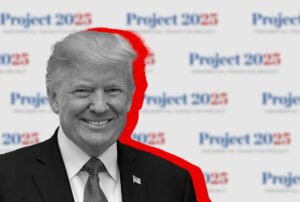 Project 2025 Is Not Dead: Here’s Why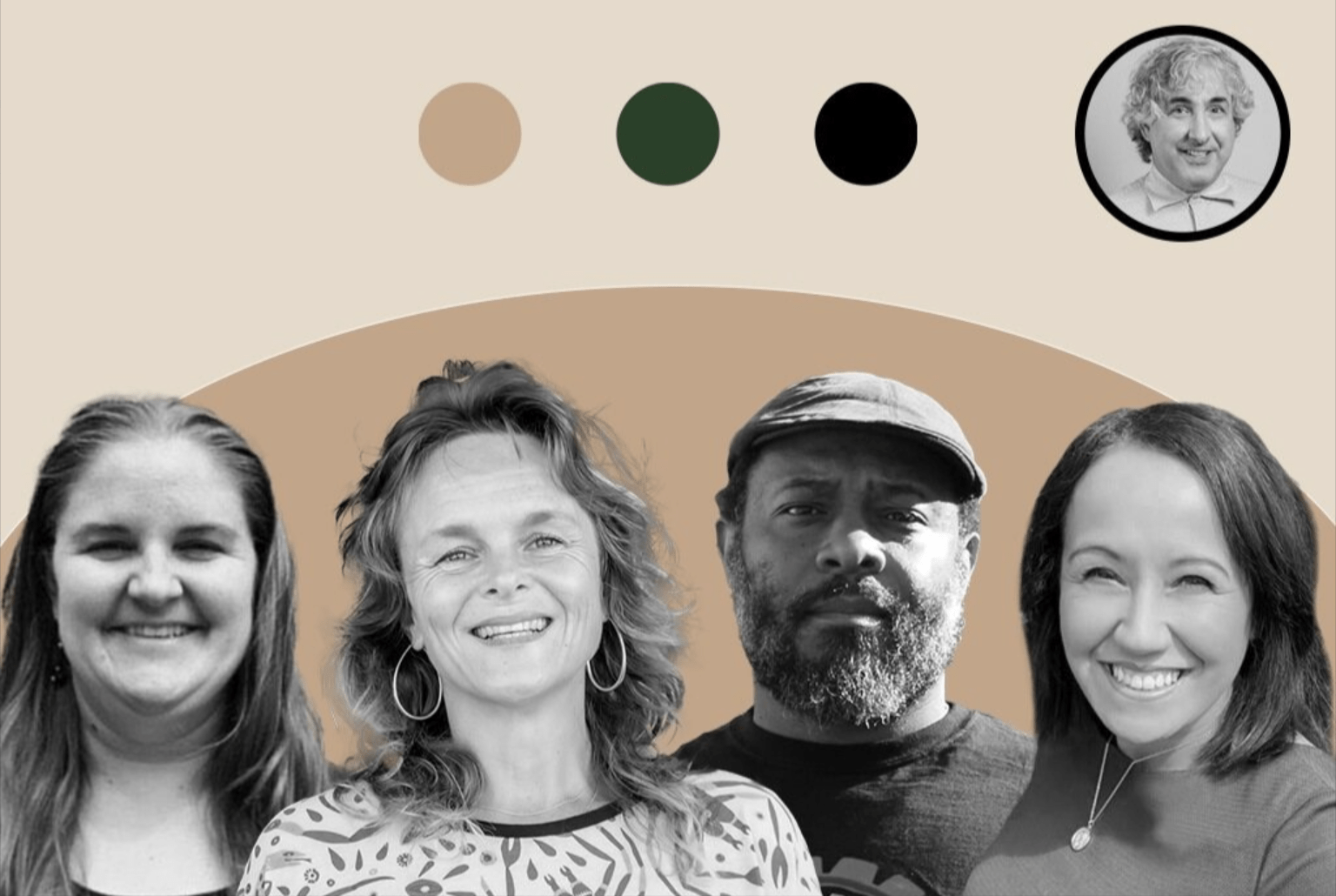 Remaking the Economy Escaping Corporate Capture  Playing to Win: How Nonprofits Add 501c4's to Expand their Movement Impact  Advanced QuickBooks for Nonprofits DESKTOP USERS ONLINE USERS  - Privacy Overview
- Strictly Necessary Cookies
This website uses cookies so that we can provide you with the best user experience possible. Cookie information is stored in your browser and performs functions such as recognising you when you return to our website and helping our team to understand which sections of the website you find most interesting and useful. Strictly Necessary Cookie should be enabled at all times so that we can save your preferences for cookie settings. If you disable this cookie, we will not be able to save your preferences. This means that every time you visit this website you will need to enable or disable cookies again. Nursing Research GrantsSince 1955, more than 1,100 beginning and experienced nurse researchers have received over $6 million for research addressing important issues of practice of care and the profession. In keeping with both the terms of the fund endowments that we steward with great care, and the spirit of innovation, the American Nurses Foundation is taking the Nursing Research Grants program in a new direction. Rather than a singular annual RFP, the Foundation will issue separate targeted calls for proposals over the course of the year, and make some commissioned research grants. These grants, though fewer in number than previous years, will be larger in size, and more strategically targeted to address topics that are essentially pertinent at this time, and consistent with the ANAE Enterprise strategic plan , Foundation core interests, and the purposes of endowed funds. - Open grant opportunities and recent awards are listed below. As additional research grant opportunities open, notice will be posted to this webpage.
Nursing Research Grant Opportunities: If you would like to receive direct notice of new grant opportunities, please fill out this form and you will be added to the email distribution list to receive updates when new grant opportunities are posted  Open Funding OpportunitiesCollaborative Care Grant - RFP now open, applications due December 10 This interprofessional collaboration between nurses and pharmacists, offered in partnership with the American Society of Health-Systems Pharmacists (ASHP) Foundation, awards $75,000 over 18 months. This joint endeavor supports innovative projects co-led by nurses and pharmacists to stimulate and demonstrate how team-based care enhances safe and effective use of medications. - Innovating or evaluating new services or technologies to minimize barriers to care for populations such as at-risk or complex patients from underserved communities, or individuals who are elderly, have comorbidities or require chronic care.
- Focusing on complex systems and processes (e.g. emergency departments), transitions of care, continuums of care, preventative care.
- Priority to be given to research that measures teamwork and meaningful outcomes, such as decreased patient harm, increased patient involvement in care, reduced hospital admissions/readmissions, and improved quality of life.
How to Apply webinar: Aug. 9, 2023 at noon ET , and the recording will be posted shortly thereafter. Nursing Leadership Research Grant - RFP opens October 11, applications due December 15 American Nurses Foundation and Association for Leadership Science in Nursing are partnering to offer a 2-year, $20,000 research grant from the Joyce J. Fitzpatrick Leadership Research Endowment . This will provide funding for one research study that advances the science supporting and reframing the role of frontline nurse leaders (e.g., nurse managers, assistant nurse managers, administrative supervisors, nursing directors). Of particular interest are studies that examine specific system-level strategies that address frontline nurse leader span of control, work-life balance, and career advancement. This call is for research proposals on frontline nurse leaders and supports the following research priority areas: - Nurses' health, well-being, resiliency, and safety in the workplace
- Healthy work and practice environments for nurse leaders
- Nurse leaders' development and essential competencies
Grants AwardedCollaborative Care Grants for Nurse-Pharmacist Research Teams Optimizing patient-centered, team-based care is essential to ensuring equitable, effective, and efficient health care. The American Nurses Foundation and the ASHP Foundation have joined in partnership to offer the second competitive grant to support innovative projects, co-led by nursing and pharmacy, to stimulate and demonstrate the impact of team-based care that enhances the safe and effective use of medications. The award provides $75,000 for an 18-month research project, led by Co-Investigators Christine Marie Hallman, DNP, APRN, ACHPN, NP-C, primary nurse practitioner for the community-based telehealth PATCH program at MedStar Health Washington Hospital Center, and Kathryn A. Walker, PharmD, BCPS, FAAHPM, assistant vice president at MedStar Health and an associate professor at the University of Maryland School of Pharmacy. Their feasibility study seeks to implement a standardized, patient-centered, team-based deprescribing process in a diverse community-based palliative care PATCH (Palliative Telehealth Connecting to Home) Program. This effort aims to ensure all patients can benefit from careful alignment of their medications and goals of care. The study will help establish a new model of team-based deprescribing in an underserved population by incorporating a structured approach within the standard clinical workflow. In the future, the findings can serve as a resource to other teams caring for patients with serious illness, providing insight into patient/family experiences and thereby filing a gap within the existing body of literature. Read more about the award here . The grant was supported in part by generous contributions from Stryker Medical to American Nurses Foundation for research purposes. Study results were published in the American Journal of Cardiology - DOI . Awarded Ambulatory Research Grant With support from the Collaborative Alliance for Nursing Outcomes (CALNOC) Research Endowment Fund , the Foundation has bestowed its first ambulatory care research grant. This $200,000 award to co-principal investigators Kortney F. James, PhD, RN, PNP, Associate Health Policy Researcher at RAND Corporation, and Kristen Choi, PhD, MS, RN, Assistant Professor of Nursing and Public Health at UCLA and co-investigators Misty Richards, MD, MS, and Joann Elmore, MD, MPH, supports a 2-year study, Nurses Address Perinatal Mental Health Inequities among Black Women and Birthing People: A Feasibility Study. Registered nurses are the largest segment of the healthcare workforce in the United States, and as such, nurses are in an ideal position to identify pregnany/postpartum people who may have depression and/or anxiety. This study will leverage the skills and expertise of registered nurses to achieve health equity for Black women and birthing people by implementing Black Maternal Health 360, a training grounded in principles of Reproductive Justice to combat implicit racial bias among registered nurses. The training also uses a nurse-led depression and anxiety screening protocol to refer Black women to local, culturally appropriate, and holistic mental health resources. Utilizing nurses to address mood and anxiety disorders from a Reproductive Justice framework may contribute to reduced racial disparities and greater health equity in mental health outcomes for Black pregnant and postpartum women/birthing people. The Foundation identified the Fund's inaugural grant with counsel from the American Nurses Credentialing Center (ANCC). Nursing Research Grants Policies Click below to learn more about the Nursing Research Grants Policies. Past Nursing Research Grant Scholars Support the Nursing Research Grants Program  Item(s) added to cart  Grant Proposals (or Give me the money!)What this handout is about. This handout will help you write and revise grant proposals for research funding in all academic disciplines (sciences, social sciences, humanities, and the arts). It’s targeted primarily to graduate students and faculty, although it will also be helpful to undergraduate students who are seeking funding for research (e.g. for a senior thesis). The grant writing processA grant proposal or application is a document or set of documents that is submitted to an organization with the explicit intent of securing funding for a research project. Grant writing varies widely across the disciplines, and research intended for epistemological purposes (philosophy or the arts) rests on very different assumptions than research intended for practical applications (medicine or social policy research). Nonetheless, this handout attempts to provide a general introduction to grant writing across the disciplines. Before you begin writing your proposal, you need to know what kind of research you will be doing and why. You may have a topic or experiment in mind, but taking the time to define what your ultimate purpose is can be essential to convincing others to fund that project. Although some scholars in the humanities and arts may not have thought about their projects in terms of research design, hypotheses, research questions, or results, reviewers and funding agencies expect you to frame your project in these terms. You may also find that thinking about your project in these terms reveals new aspects of it to you. Writing successful grant applications is a long process that begins with an idea. Although many people think of grant writing as a linear process (from idea to proposal to award), it is a circular process. Many people start by defining their research question or questions. What knowledge or information will be gained as a direct result of your project? Why is undertaking your research important in a broader sense? You will need to explicitly communicate this purpose to the committee reviewing your application. This is easier when you know what you plan to achieve before you begin the writing process. Diagram 1 below provides an overview of the grant writing process and may help you plan your proposal development. 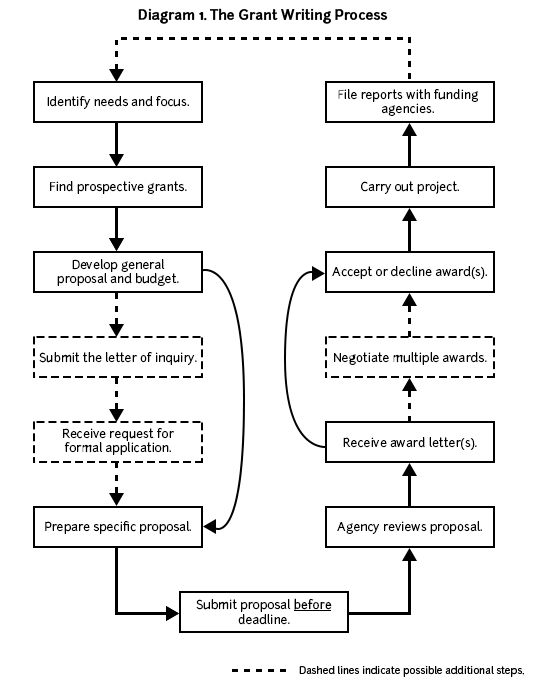 Applicants must write grant proposals, submit them, receive notice of acceptance or rejection, and then revise their proposals. Unsuccessful grant applicants must revise and resubmit their proposals during the next funding cycle. Successful grant applications and the resulting research lead to ideas for further research and new grant proposals. Cultivating an ongoing, positive relationship with funding agencies may lead to additional grants down the road. Thus, make sure you file progress reports and final reports in a timely and professional manner. Although some successful grant applicants may fear that funding agencies will reject future proposals because they’ve already received “enough” funding, the truth is that money follows money. Individuals or projects awarded grants in the past are more competitive and thus more likely to receive funding in the future. Some general tips- Begin early.
- Apply early and often.
- Don’t forget to include a cover letter with your application.
- Answer all questions. (Pre-empt all unstated questions.)
- If rejected, revise your proposal and apply again.
- Give them what they want. Follow the application guidelines exactly.
- Be explicit and specific.
- Be realistic in designing the project.
- Make explicit the connections between your research questions and objectives, your objectives and methods, your methods and results, and your results and dissemination plan.
- Follow the application guidelines exactly. (We have repeated this tip because it is very, very important.)
Before you start writingIdentify your needs and focus. First, identify your needs. Answering the following questions may help you: - Are you undertaking preliminary or pilot research in order to develop a full-blown research agenda?
- Are you seeking funding for dissertation research? Pre-dissertation research? Postdoctoral research? Archival research? Experimental research? Fieldwork?
- Are you seeking a stipend so that you can write a dissertation or book? Polish a manuscript?
- Do you want a fellowship in residence at an institution that will offer some programmatic support or other resources to enhance your project?
- Do you want funding for a large research project that will last for several years and involve multiple staff members?
Next, think about the focus of your research/project. Answering the following questions may help you narrow it down: - What is the topic? Why is this topic important?
- What are the research questions that you’re trying to answer? What relevance do your research questions have?
- What are your hypotheses?
- What are your research methods?
- Why is your research/project important? What is its significance?
- Do you plan on using quantitative methods? Qualitative methods? Both?
- Will you be undertaking experimental research? Clinical research?
Once you have identified your needs and focus, you can begin looking for prospective grants and funding agencies. Finding prospective grants and funding agenciesWhether your proposal receives funding will rely in large part on whether your purpose and goals closely match the priorities of granting agencies. Locating possible grantors is a time consuming task, but in the long run it will yield the greatest benefits. Even if you have the most appealing research proposal in the world, if you don’t send it to the right institutions, then you’re unlikely to receive funding. There are many sources of information about granting agencies and grant programs. Most universities and many schools within universities have Offices of Research, whose primary purpose is to support faculty and students in grant-seeking endeavors. These offices usually have libraries or resource centers to help people find prospective grants. At UNC, the Research at Carolina office coordinates research support. The Funding Information Portal offers a collection of databases and proposal development guidance. The UNC School of Medicine and School of Public Health each have their own Office of Research. Writing your proposalThe majority of grant programs recruit academic reviewers with knowledge of the disciplines and/or program areas of the grant. Thus, when writing your grant proposals, assume that you are addressing a colleague who is knowledgeable in the general area, but who does not necessarily know the details about your research questions. Remember that most readers are lazy and will not respond well to a poorly organized, poorly written, or confusing proposal. Be sure to give readers what they want. Follow all the guidelines for the particular grant you are applying for. This may require you to reframe your project in a different light or language. Reframing your project to fit a specific grant’s requirements is a legitimate and necessary part of the process unless it will fundamentally change your project’s goals or outcomes. Final decisions about which proposals are funded often come down to whether the proposal convinces the reviewer that the research project is well planned and feasible and whether the investigators are well qualified to execute it. Throughout the proposal, be as explicit as possible. Predict the questions that the reviewer may have and answer them. Przeworski and Salomon (1995) note that reviewers read with three questions in mind: - What are we going to learn as a result of the proposed project that we do not know now? (goals, aims, and outcomes)
- Why is it worth knowing? (significance)
- How will we know that the conclusions are valid? (criteria for success) (2)
Be sure to answer these questions in your proposal. Keep in mind that reviewers may not read every word of your proposal. Your reviewer may only read the abstract, the sections on research design and methodology, the vitae, and the budget. Make these sections as clear and straightforward as possible. The way you write your grant will tell the reviewers a lot about you (Reif-Lehrer 82). From reading your proposal, the reviewers will form an idea of who you are as a scholar, a researcher, and a person. They will decide whether you are creative, logical, analytical, up-to-date in the relevant literature of the field, and, most importantly, capable of executing the proposed project. Allow your discipline and its conventions to determine the general style of your writing, but allow your own voice and personality to come through. Be sure to clarify your project’s theoretical orientation. Develop a general proposal and budgetBecause most proposal writers seek funding from several different agencies or granting programs, it is a good idea to begin by developing a general grant proposal and budget. This general proposal is sometimes called a “white paper.” Your general proposal should explain your project to a general academic audience. Before you submit proposals to different grant programs, you will tailor a specific proposal to their guidelines and priorities. Organizing your proposalAlthough each funding agency will have its own (usually very specific) requirements, there are several elements of a proposal that are fairly standard, and they often come in the following order: - Introduction (statement of the problem, purpose of research or goals, and significance of research)
Literature review - Project narrative (methods, procedures, objectives, outcomes or deliverables, evaluation, and dissemination)
- Budget and budget justification
Format the proposal so that it is easy to read. Use headings to break the proposal up into sections. If it is long, include a table of contents with page numbers. The title page usually includes a brief yet explicit title for the research project, the names of the principal investigator(s), the institutional affiliation of the applicants (the department and university), name and address of the granting agency, project dates, amount of funding requested, and signatures of university personnel authorizing the proposal (when necessary). Most funding agencies have specific requirements for the title page; make sure to follow them. The abstract provides readers with their first impression of your project. To remind themselves of your proposal, readers may glance at your abstract when making their final recommendations, so it may also serve as their last impression of your project. The abstract should explain the key elements of your research project in the future tense. Most abstracts state: (1) the general purpose, (2) specific goals, (3) research design, (4) methods, and (5) significance (contribution and rationale). Be as explicit as possible in your abstract. Use statements such as, “The objective of this study is to …” Introduction The introduction should cover the key elements of your proposal, including a statement of the problem, the purpose of research, research goals or objectives, and significance of the research. The statement of problem should provide a background and rationale for the project and establish the need and relevance of the research. How is your project different from previous research on the same topic? Will you be using new methodologies or covering new theoretical territory? The research goals or objectives should identify the anticipated outcomes of the research and should match up to the needs identified in the statement of problem. List only the principle goal(s) or objective(s) of your research and save sub-objectives for the project narrative. Many proposals require a literature review. Reviewers want to know whether you’ve done the necessary preliminary research to undertake your project. Literature reviews should be selective and critical, not exhaustive. Reviewers want to see your evaluation of pertinent works. For more information, see our handout on literature reviews . Project narrative The project narrative provides the meat of your proposal and may require several subsections. The project narrative should supply all the details of the project, including a detailed statement of problem, research objectives or goals, hypotheses, methods, procedures, outcomes or deliverables, and evaluation and dissemination of the research. For the project narrative, pre-empt and/or answer all of the reviewers’ questions. Don’t leave them wondering about anything. For example, if you propose to conduct unstructured interviews with open-ended questions, be sure you’ve explained why this methodology is best suited to the specific research questions in your proposal. Or, if you’re using item response theory rather than classical test theory to verify the validity of your survey instrument, explain the advantages of this innovative methodology. Or, if you need to travel to Valdez, Alaska to access historical archives at the Valdez Museum, make it clear what documents you hope to find and why they are relevant to your historical novel on the ’98ers in the Alaskan Gold Rush. Clearly and explicitly state the connections between your research objectives, research questions, hypotheses, methodologies, and outcomes. As the requirements for a strong project narrative vary widely by discipline, consult a discipline-specific guide to grant writing for some additional advice. Explain staffing requirements in detail and make sure that staffing makes sense. Be very explicit about the skill sets of the personnel already in place (you will probably include their Curriculum Vitae as part of the proposal). Explain the necessary skill sets and functions of personnel you will recruit. To minimize expenses, phase out personnel who are not relevant to later phases of a project. The budget spells out project costs and usually consists of a spreadsheet or table with the budget detailed as line items and a budget narrative (also known as a budget justification) that explains the various expenses. Even when proposal guidelines do not specifically mention a narrative, be sure to include a one or two page explanation of the budget. To see a sample budget, turn to Example #1 at the end of this handout. Consider including an exhaustive budget for your project, even if it exceeds the normal grant size of a particular funding organization. Simply make it clear that you are seeking additional funding from other sources. This technique will make it easier for you to combine awards down the road should you have the good fortune of receiving multiple grants. Make sure that all budget items meet the funding agency’s requirements. For example, all U.S. government agencies have strict requirements for airline travel. Be sure the cost of the airline travel in your budget meets their requirements. If a line item falls outside an agency’s requirements (e.g. some organizations will not cover equipment purchases or other capital expenses), explain in the budget justification that other grant sources will pay for the item. Many universities require that indirect costs (overhead) be added to grants that they administer. Check with the appropriate offices to find out what the standard (or required) rates are for overhead. Pass a draft budget by the university officer in charge of grant administration for assistance with indirect costs and costs not directly associated with research (e.g. facilities use charges). Furthermore, make sure you factor in the estimated taxes applicable for your case. Depending on the categories of expenses and your particular circumstances (whether you are a foreign national, for example), estimated tax rates may differ. You can consult respective departmental staff or university services, as well as professional tax assistants. For information on taxes on scholarships and fellowships, see https://cashier.unc.edu/student-tax-information/scholarships-fellowships/ . Explain the timeframe for the research project in some detail. When will you begin and complete each step? It may be helpful to reviewers if you present a visual version of your timeline. For less complicated research, a table summarizing the timeline for the project will help reviewers understand and evaluate the planning and feasibility. See Example #2 at the end of this handout. For multi-year research proposals with numerous procedures and a large staff, a time line diagram can help clarify the feasibility and planning of the study. See Example #3 at the end of this handout. Revising your proposalStrong grant proposals take a long time to develop. Start the process early and leave time to get feedback from several readers on different drafts. Seek out a variety of readers, both specialists in your research area and non-specialist colleagues. You may also want to request assistance from knowledgeable readers on specific areas of your proposal. For example, you may want to schedule a meeting with a statistician to help revise your methodology section. Don’t hesitate to seek out specialized assistance from the relevant research offices on your campus. At UNC, the Odum Institute provides a variety of services to graduate students and faculty in the social sciences. In your revision and editing, ask your readers to give careful consideration to whether you’ve made explicit the connections between your research objectives and methodology. Here are some example questions: - Have you presented a compelling case?
- Have you made your hypotheses explicit?
- Does your project seem feasible? Is it overly ambitious? Does it have other weaknesses?
- Have you stated the means that grantors can use to evaluate the success of your project after you’ve executed it?
If a granting agency lists particular criteria used for rating and evaluating proposals, be sure to share these with your own reviewers. Example #1. Sample Budget | | | | | | | Jet Travel | | | | | | RDU-Kigali (roundtrip) | 1 | | $6,100 | $6,100 | | Maintenance Allowance | | | | | | Rwanda | 12 months | $1,899 | $22,788 | $22,788 | | Project Allowance | | | | | | Research Assistant/Translator | 12 months | $400 | $4800 | | | Transportation within country | | | | | | –Phase 1 | 4 months | $300 | $1,200 | | | –Phase 2 | 8 months | $1,500 | $12,000 | | | Email | 12 months | $60 | $720 | | | Audio cassette tapes | 200 | $2 | $400 | | | Photographic and slide film | 20 | $5 | $100 | | | Laptop Computer | 1 | | $2,895 | | | NUD*IST 4.0 Software | | | $373 | | | Etc. | | | | | | Total Project Allowance | | | | $35,238 | | Administrative Fee | | | | $100 | | Total | | | | $65,690 | | Sought from other sources | | | | ($15,000) | | Total Grant Request | | | | $50,690 | Jet travel $6,100 This estimate is based on the commercial high season rate for jet economy travel on Sabena Belgian Airlines. No U.S. carriers fly to Kigali, Rwanda. Sabena has student fare tickets available which will be significantly less expensive (approximately $2,000). Maintenance allowance $22,788 Based on the Fulbright-Hays Maintenance Allowances published in the grant application guide. Research assistant/translator $4,800 The research assistant/translator will be a native (and primary) speaker of Kinya-rwanda with at least a four-year university degree. They will accompany the primary investigator during life history interviews to provide assistance in comprehension. In addition, they will provide commentary, explanations, and observations to facilitate the primary investigator’s participant observation. During the first phase of the project in Kigali, the research assistant will work forty hours a week and occasional overtime as needed. During phases two and three in rural Rwanda, the assistant will stay with the investigator overnight in the field when necessary. The salary of $400 per month is based on the average pay rate for individuals with similar qualifications working for international NGO’s in Rwanda. Transportation within country, phase one $1,200 The primary investigator and research assistant will need regular transportation within Kigali by bus and taxi. The average taxi fare in Kigali is $6-8 and bus fare is $.15. This figure is based on an average of $10 per day in transportation costs during the first project phase. Transportation within country, phases two and three $12,000 Project personnel will also require regular transportation between rural field sites. If it is not possible to remain overnight, daily trips will be necessary. The average rental rate for a 4×4 vehicle in Rwanda is $130 per day. This estimate is based on an average of $50 per day in transportation costs for the second and third project phases. These costs could be reduced if an arrangement could be made with either a government ministry or international aid agency for transportation assistance. Email $720 The rate for email service from RwandaTel (the only service provider in Rwanda) is $60 per month. Email access is vital for receiving news reports on Rwanda and the region as well as for staying in contact with dissertation committee members and advisors in the United States. Audiocassette tapes $400 Audiocassette tapes will be necessary for recording life history interviews, musical performances, community events, story telling, and other pertinent data. Photographic & slide film $100 Photographic and slide film will be necessary to document visual data such as landscape, environment, marriages, funerals, community events, etc. Laptop computer $2,895 A laptop computer will be necessary for recording observations, thoughts, and analysis during research project. Price listed is a special offer to UNC students through the Carolina Computing Initiative. NUD*IST 4.0 software $373.00 NUD*IST, “Nonnumerical, Unstructured Data, Indexing, Searching, and Theorizing,” is necessary for cataloging, indexing, and managing field notes both during and following the field research phase. The program will assist in cataloging themes that emerge during the life history interviews. Administrative fee $100 Fee set by Fulbright-Hays for the sponsoring institution. Example #2: Project Timeline in Table Format | Exploratory Research | Completed | | Proposal Development | Completed | | Ph.D. qualifying exams | Completed | | Research Proposal Defense | Completed | | Fieldwork in Rwanda | Oct. 1999-Dec. 2000 | | Data Analysis and Transcription | Jan. 2001-March 2001 | | Writing of Draft Chapters | March 2001 – Sept. 2001 | | Revision | Oct. 2001-Feb. 2002 | | Dissertation Defense | April 2002 | | Final Approval and Completion | May 2002 | Example #3: Project Timeline in Chart Format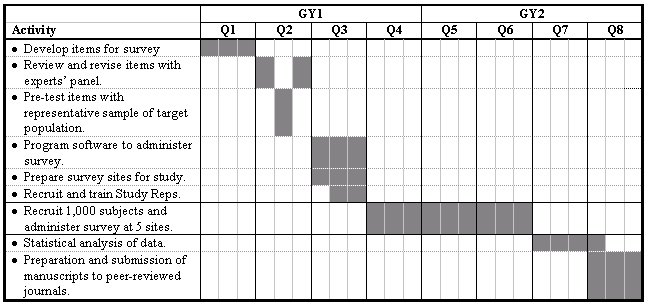 Some closing adviceSome of us may feel ashamed or embarrassed about asking for money or promoting ourselves. Often, these feelings have more to do with our own insecurities than with problems in the tone or style of our writing. If you’re having trouble because of these types of hang-ups, the most important thing to keep in mind is that it never hurts to ask. If you never ask for the money, they’ll never give you the money. Besides, the worst thing they can do is say no. UNC resources for proposal writingResearch at Carolina http://research.unc.edu The Odum Institute for Research in the Social Sciences https://odum.unc.edu/ UNC Medical School Office of Research https://www.med.unc.edu/oor UNC School of Public Health Office of Research http://www.sph.unc.edu/research/ Works consultedWe consulted these works while writing this handout. This is not a comprehensive list of resources on the handout’s topic, and we encourage you to do your own research to find additional publications. Please do not use this list as a model for the format of your own reference list, as it may not match the citation style you are using. For guidance on formatting citations, please see the UNC Libraries citation tutorial . We revise these tips periodically and welcome feedback. Holloway, Brian R. 2003. Proposal Writing Across the Disciplines. Upper Saddle River, New Jersey: Prentice Hall. Levine, S. Joseph. “Guide for Writing a Funding Proposal.” http://www.learnerassociates.net/proposal/ . Locke, Lawrence F., Waneen Wyrick Spirduso, and Stephen J. Silverman. 2014. Proposals That Work . Thousand Oaks, CA: Sage. Przeworski, Adam, and Frank Salomon. 2012. “Some Candid Suggestions on the Art of Writing Proposals.” Social Science Research Council. https://s3.amazonaws.com/ssrc-cdn2/art-of-writing-proposals-dsd-e-56b50ef814f12.pdf . Reif-Lehrer, Liane. 1989. Writing a Successful Grant Application . Boston: Jones and Bartlett Publishers. Wiggins, Beverly. 2002. “Funding and Proposal Writing for Social Science Faculty and Graduate Student Research.” Chapel Hill: Howard W. Odum Institute for Research in Social Science. 2 Feb. 2004. http://www2.irss.unc.edu/irss/shortcourses/wigginshandouts/granthandout.pdf. You may reproduce it for non-commercial use if you use the entire handout and attribute the source: The Writing Center, University of North Carolina at Chapel Hill Make a Gift  Research Voyage Research Tips and Infromation Research Grants for Independent Researchers: A Complete Guide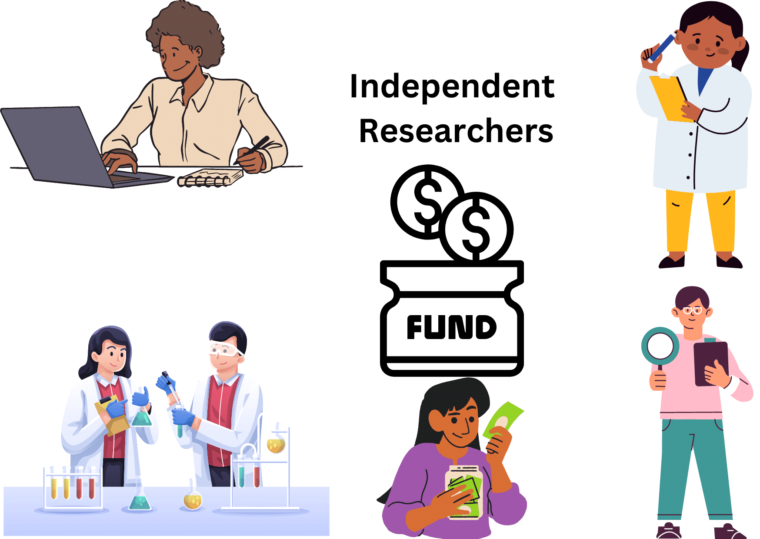 IntroductionWhat are independent research grants, examples of grants available for individual or independent researchers, common eligibility criteria for grants for individuals, examples of small or short research grants, tips for writing a strong research proposal, benefits of receiving grants for individual or independent researchers. Research Grants can be a vital source of funding for individual or independent researchers who may not have institutional support. Many funding organizations and foundations offer research grants to independent researchers to support research projects in various fields, such as science, social science, humanities, and other academic disciplines. These grants provide researchers with the financial support necessary to carry out their research projects and make significant contributions to their fields. For example, a graduate student studying anthropology may want to conduct research on the cultural practices of indigenous communities in South America. Without institutional support, the student may have limited financial resources to carry out the research, such as travelling to remote areas, conducting interviews, and gathering data. However, if the student were to receive a research grant, they could use the funds to cover expenses such as travel, equipment, and research assistants, allowing them to conduct the research project successfully. Similarly, an independent researcher working in a field such as engineering or computer science may not have access to the resources or equipment necessary to conduct their research without institutional support. However, by receiving a grant, the researcher can purchase the necessary equipment, pay for research assistants, and cover other expenses required for the research project. Therefore, the importance of grants for individual or independent researchers cannot be overstated, as they provide much-needed financial support and resources that can help advance their research careers and make significant contributions to their fields. Independent research grants refer to funding opportunities provided to individual researchers who are not affiliated with or supported by a specific institution or organization. These grants are typically awarded to scholars, scientists, and other professionals who conduct research outside the framework of institutional affiliations, such as universities or research institutes. Independent research grants may come from various sources, including government agencies, private foundations, non-profit organizations, and industry sponsors. These grants aim to support innovative and high-quality research projects proposed by individual researchers, providing them with financial resources to cover expenses such as equipment, travel, materials, and personnel costs. Unlike grants awarded to institutional research teams or projects, independent research grants focus on supporting the work of individual investigators, often allowing them greater flexibility and autonomy in pursuing their research objectives. These grants play a crucial role in fostering creativity, advancing knowledge, and supporting the careers of independent researchers across diverse academic disciplines and fields of inquiry. Types of Grants Available for Individual or Independent ResearchersThere are several types of grants available for individual or independent researchers across various fields. These grants may cover different areas of research, from scientific research to humanities research, and they may come from different organizations and foundations. - National Science Foundation (NSF) Grants : The NSF offers a variety of grants to support scientific research in fields such as engineering, biology, physics, and computer science. These grants are available to individual researchers as well as teams and institutions.
- Social Science Research Council (SSRC) Grants : The SSRC offers grants for social science research, including grants for individual researchers and collaborative research projects.
- American Council of Learned Societies (ACLS) Grants : The ACLS offers grants for humanities research, including fellowships for individual researchers and collaborative research projects.
- Fulbright Scholar Program : The Fulbright Scholar Program provides grants for individual researchers to conduct research or teach abroad in various fields, including the sciences, social sciences, and humanities.
- American Association of University Women (AAUW) Grants : The AAUW offers grants for women in various fields, including the sciences, social sciences, and humanities.
- The John Templeton Foundation Grants: The John Templeton Foundation offers grants for individual researchers and research teams to explore the intersection of science, religion, and spirituality.
These are just a few examples of the types of grants available to individual or independent researchers. It is important to note that there are many other organizations and foundations that offer grants in various fields. It is recommended to do thorough research to find the grants that are most suitable for your research project and qualifications. Grants have specific eligibility criteria that applicants must meet to be considered for funding. The eligibility criteria vary depending on the type of grant, the funding organization or foundation, and the area of research. - Educational qualifications: Some grants may require applicants to have a specific educational background, such as a PhD, a master’s degree, or a bachelor’s degree in a relevant field.
- Professional experience: Some grants may require applicants to have a certain level of professional experience, such as a minimum number of years working in a specific field.
- Area of research: Grants may be available for specific areas of research, such as biology, engineering, or social sciences. Applicants must have a research project that aligns with the focus of the grant.
- Citizenship or residency: Some grants may have citizenship or residency requirements, such as being a citizen or resident of a specific country or region.
- Career stage: Some grants may be available for researchers at a specific career stage, such as early-career researchers or established researchers.
To determine if you are eligible for a particular grant, you should carefully review the eligibility criteria provided by the funding organization or foundation. You may also consider contacting the organization or foundation to ask for clarification on eligibility criteria or to ask if they have any recommendations for other funding opportunities if you do not meet their criteria. It is important to note that meeting the eligibility criteria does not guarantee that you will receive the grant. You must also submit a strong research proposal that aligns with the focus of the grant and demonstrates your ability to conduct high-quality research. Small or Short Term Research GrantsA small research grant for individuals typically refers to funding provided to support research projects conducted by individual researchers, often at the early stages of their career or for smaller-scale projects. These grants can vary widely in terms of the amount of funding provided and the specific requirements or restrictions placed on how the funds can be used. Small research grants are often offered by universities, research institutions, government agencies, non-profit organizations, and sometimes private foundations. They can cover a range of expenses related to the research project, such as equipment or supplies, travel expenses for fieldwork or conferences, participant incentives, or even stipends for the researcher’s time. The eligibility criteria for these grants can also vary, but they are generally open to individual researchers rather than larger research teams or institutions. Applicants may need to demonstrate the significance of their proposed research project, its feasibility, and how the funding will contribute to its successful completion. Small research grants can be valuable opportunities for individual researchers to pursue their research interests, gain experience in securing funding, and build their professional network. They can also serve as important sources of support for research projects that may not be eligible for larger or more competitive funding opportunities. - CWIT Short Research Grants
- PIECEs Small Scale Research Grants – Call open in India!
- British Academy/Leverhulme Small Research Grants
Application Process for GrantsThe application process for grants can be complex and time-consuming, but it is essential to follow the guidelines carefully and present a strong research proposal that aligns with the focus of the grant. Here are the steps involved in the application process for grants: - Identify grant opportunities: Research different grants available for individual or independent researchers that align with your research project and qualifications. You can search for grants on the websites of funding organizations or foundations, or by using search engines such as GrantWatch or Pivot .
- Prepare a research proposal: The research proposal should outline the purpose and scope of your research project, the methodology you plan to use, and the potential impact of your research. Make sure to follow the guidelines provided by the funding organization or foundation carefully, including page limits, formatting requirements, and deadlines.
- Submit the application: Submit your research proposal and any required documents, such as a CV or letters of recommendation, by the deadline provided by the funding organization or foundation. Make sure to double-check your application for any errors or omissions before submitting it.
- Follow up with the funding organization: After submitting your application, follow up with the funding organization or foundation to confirm receipt of your application and to inquire about the timeline for review and notification of funding decisions.
- Read the guidelines carefully: Make sure to read the guidelines provided by the funding organization or foundation carefully and follow them closely. Failure to follow the guidelines can result in your application being rejected.
- Clearly define your research question: Your research question should be clear, concise, and focused. Make sure to explain why your research is important and how it will contribute to your field.
- Use a strong methodology: Your methodology should be appropriate for your research question and should demonstrate your ability to conduct high-quality research. Make sure to explain your methodology in detail and provide a timeline for completing your research.
- Consider the potential impact of your research: Explain how your research will contribute to your field and the broader community. Make sure to highlight any potential applications or implications of your research.
- Seek feedback: Before submitting your application, seek feedback from colleagues or mentors to ensure that your research proposal is clear, concise, and compelling.
In case you are not familiar with writing research grant proposals, then please visit my post on Research Grants Uncovered: A Step-by-Step Guide to Funding Your Research Projects . This post will help you in writing powerful research grant proposals in minimal time. Receiving a grant can provide numerous benefits to individual or independent researchers. Here are some of the benefits: - Financial support: Grants provide financial support that can help cover research expenses, such as equipment, supplies, travel, and participant compensation. This support can be especially valuable for independent researchers who may not have access to institutional funding.
- Recognition: Receiving a grant can provide recognition for your research and can help you establish a reputation in your field. This recognition can be valuable when applying for future funding opportunities or job positions.
- Access to resources: Many grants provide access to resources that can support your research, such as libraries, databases, and research facilities. This access can be especially valuable for independent researchers who may not have access to these resources otherwise.
- Networking opportunities: Some grants provide networking opportunities that can help you connect with other researchers and potential collaborators. These connections can be valuable for advancing your research and career.
- Advancement of career: Receiving a grant can help you advance your career by providing support for your research, building your reputation in your field, and providing opportunities for networking and collaboration. Grants can also help you gain experience in writing grant proposals and managing research projects, which can be valuable skills for future funding opportunities and job positions.
Overall, receiving a grant can help independent researchers make significant contributions to their field of research and advance their careers. It is important to carefully review eligibility criteria and application guidelines, and to submit a strong research proposal that aligns with the focus of the grant, to increase the chances of receiving funding. This blog post has discussed the possibility of getting grants for individual or independent researchers. We have outlined the different types of grants available, the eligibility criteria, the application process, and the benefits of receiving grants. It is important to note that grants can provide valuable financial support, recognition, access to resources, networking opportunities, and career advancement for independent researchers. If you are an individual or independent researcher, we encourage you to explore grant opportunities that may be available to you. Look into organizations and foundations that offer grants in your field of research and review their eligibility criteria and application guidelines carefully. With a strong research proposal and diligent effort, you may be able to secure a grant that can help you achieve your research goals and advance your career. Upcoming Events- Visit the Upcoming International Conferences at Exotic Travel Destinations with Travel Plan
- Visit for Research Internships Worldwide
 Recent Posts- Best 5 Journals for Quick Review and High Impact in August 2024
- 05 Quick Review, High Impact, Best Research Journals for Submissions for July 2024
- Top Mistakes to Avoid When Writing a Research Paper
- Average Stipend for Research/Academic Internships
- These Institutes Offer Remote Research/Academic Internships
- All Blog Posts
- Research Career
- Research Conference
- Research Internship
- Research Journal
- Research Tools
- Uncategorized
- Research Conferences
- Research Journals
- Research Grants
- Internships
- Research Internships
- Email Templates
- Conferences
- Blog Partners
- Privacy Policy
Copyright © 2024 Research Voyage Design by ThemesDNA.com  Advertisement Supported by Biden Awards $150 Million in Research Grants as Part of Cancer ‘Moonshot’President Biden has had a deep personal interest in cancer research since his son Beau died of an aggressive brain cancer in 2015. President Biden Announces $150 Million in Cancer Research GrantsPresident biden said eight research centers would receive research awards aimed at pioneering new methods of precision cancer surgery as part of his administration’s cancer “moonshoot” initiative.. As all of you know, cancer surgery is an incredibly challenging procedure. It takes the best surgeons in the world, and it takes its toll on families. As Jill and I — as Jill says, it steals time. It steals away hope. Our family knows the feeling, as many here do. Today, we’re announcing $150 million ARPA-H funding for some of the nation’s cutting-edge cancer research institutions. That includes, right here, Tulane University. [cheers] And we’re moving quickly because we know all families touched by cancers are in a race against time. It’s all part of our goal, of our cancer “moonshot,” to end cancer as we know it. Even cure some cancers. We’re mobilizing the whole of country effort to cut American cancer deaths in half by — within 25 years, and boost support for patients and their families. I’m confident in our capacity to do that.  By Zach Montague Reporting from New Orleans Freed from the campaign trail and the grinding pursuit of another term, President Biden traveled to New Orleans on Tuesday to focus on a project close to his heart: the “moonshot” effort to sharply cut cancer deaths in the United States that he carried over from his time as vice president and has become a hallmark of his presidency. Speaking at Tulane University, Mr. Biden and the first lady, Jill Biden, announced eight research centers, including one at Tulane, that will collectively receive $150 million in research awards aimed at pioneering new methods of precision cancer surgery. Before addressing a crowd on campus, the president and the first lady met with a team of researchers who demonstrated the technology under development at Tulane. It uses imaging of cells on tumor sites to verify for surgeons that cancer cells have been fully removed and to reduce the need for follow-up surgeries. Standing in front of a sign reading “curing cancer faster,” Mr. Biden described touring cancer centers in Australia and Ireland, and being frustrated by a lack of international collaboration. “We don’t want to keep information — we want to share it,” he said. The awards announced on Tuesday are to be made through the Advanced Research Projects Agency for Health , or ARPA-H, which was founded in 2022 and is aimed at driving biomedical innovation. The other award recipients were Dartmouth College; Johns Hopkins University; Rice University; the University of California, San Francisco; the University of Illinois Urbana-Champaign; the University of Washington; and Cision Vision in Mountain View, Calif. We are having trouble retrieving the article content. Please enable JavaScript in your browser settings. Thank you for your patience while we verify access. If you are in Reader mode please exit and log into your Times account, or subscribe for all of The Times. Thank you for your patience while we verify access. Already a subscriber? Log in . Want all of The Times? Subscribe .  An official website of the United States government Here’s how you know Official websites use .gov A .gov website belongs to an official government organization in the United States. Secure .gov websites use HTTPS A lock ( Lock A locked padlock ) or https:// means you’ve safely connected to the .gov website. Share sensitive information only on official, secure websites. JavaScript appears to be disabled on this computer. Please click here to see any active alerts . National Priorities Grants: Evaluation of Antimicrobial Resistance in Wastewater and Sewage Sludge Treatment and Its Impact on the Environment Antimicrobial resistance (AMR) in the environment is a growing public health concern, especially the spread of AMR into surface waters. Antibiotic resistant bacteria (ARB) and antibiotic resistant genes (ARGs) can move between humans, animals and the environment and make it more difficult to treat certain infections in animals and people. The World Health Organization and U.S. Centers for Disease Control and Prevention have identified antimicrobial resistance (AMR) as one of the greatest threats to human health, and natural and treated water environments have increasingly been shown to play significant roles in AMR evolution and spread. Wastewater treatment facilities are one of the major potential receptors and sources for ARB and ARGs. These facilities receive a mix of pathogens, resistant genes, and antimicrobial drug residues from multiple sources, including industry wastewater, households, and hospitals, all of which contribute to a high density of pathogens that enter the plant. As treated wastewater is typically discharged to aquatic environments, these environments are potential exposure routes to transmit resistant pathogens and genes to humans and animals via irrigation, recreational use, or drinking water exposure. Although drinking water treatment processes are generally effective in reducing ARB and ARGs, both have nevertheless been detected in treated drinking water. Because ARB and ARGs evolve rapidly and can move between the environment, humans, and animals, it is difficult to predict where and when resistance occurs. More information is needed to characterize the occurrence and significance of AMR found in treated municipal wastewater effluent and biosolids. In addition, new research is needed to provide a better understanding of the impact of AMR on receiving waters and risks related to AMR in treated wastewater discharge, water reuse, and biosolids. To respond to these needs, EPA awarded $9 million in research grants to address knowledge gaps and better identify and manage antimicrobial resistance risk. These projects will measure the environmental health impact of AMR in wastewater advance understanding in AMR evolution and spread. Grantees will study wastewater treatment systems across the country and review past literature and genomic data to assess AMR risk in wastewater. Projects involve developing a risk assessment framework, conducting a systematic review of genomic data and evaluating the fate of antimicrobial-resistant bacteria and genes in wastewater treatment processes. To learn more, visit the funding opportunity webpage. The following institutions received an award: Oregon State University, Corvallis, Ore.Project Title: Prevalence, Abundance, and Fate of Antibiotics, Antibiotic-Resistant Bacteria, and their Determinant Genes in U.S. Wastewater Systems Principal Investigator: Tala Navab-Daneshmand Award Amount: $2,350,211 The objective of this project is to determine the fate of ARB and ARGs as well as antibiotics in wastewater treatment utilities across the U.S. Grantees will study 40 wastewater treatment utilities from five regions across the U.S. representing varied geographical conditions, population demographics, and wastewater sources over two years. Samples will be collected throughout the wastewater and biosolids treatment trains. The team will conduct a systematic review of literature on U.S.-based wastewater metagenomic data, create a comprehensive library, and conduct a meta-analysis to understand the impacts of seasonal/regional variations and treatment processes on wastewater resistome. This research will contribute to a better understanding of how wastewater treatment processes effect the proliferation and removal of AMR markers while considering different treatment trains, operational and site-specific parameters, watershed geography, and socioeconomic aspects. View the research abstract from Oregon State University. University of Nebraska, Lincoln, Neb.Project Title: A Multistate Study to Establish a Risk Assessment Framework for the AMR in Surface Water Attributable to Municipal Wastewater and Biosolids Principal Investigator: Xu Li Award Amount: $2,374,999 Researchers will establish a risk assessment framework that can estimate human health risks based on measurements of ARB and ARGs in surface water under the influence of municipal wastewater and biosolids. The project will use an integrated approach combining field data, model simulation, and risk assessment. Through collaborations among institutions in five states (Hawaii, California, Nebraska, Iowa, and New Jersey), the project will reveal the relative contributions of municipal, nonmunicipal, and natural sources to the AMR in surface waters for river systems in the four states. Fate-and-transport models for ARB and ARGs in runoff and rivers will be developed, and an exposure assessment model for ARB as well as a semi-quantitative risk characterization model for ARGs will be developed to improve stakeholders’ abilities to understand risks and develop/prioritize mitigation strategies. View the research abstract from the University of Nebraska. University of Wisconsin-Milwaukee, Milwaukee, Wis.Project Title: Understanding the Role of Wastewater Treatment for Mitigating Antimicrobial Resistance: Leveraging Historical Trajectories, Current Day Mass Balances, and Clinical Relevance Principal Investigator: Ryan Newton Award Amount: $2,038,572 Grantees will distinguish effective treatment processes for the removal of AMR and quantify and contextualize risks associated with wastewater treatment systems against industrial and agricultural sectors connected to AMR. Researchers will integrate ARG and ARB quantification and genomic and metagenomic-based DNA sequencing to determine changes in clinically relevant genotypes from treatment facility influent through the treatment train and ultimately to facility outflows. The team will also compare current wastewater resistance profiles to those from wastewater collected over the past 10 years, current ARBs and ARGs from hospital clinics, and both upstream (sewer overflows) and downstream (river transect) systems. This project will provide critical information for whether current treatment systems are effectively removing AMR. These analyses will also provide an understanding and quantification of the clinical significance of discharged AMR, and therefore risk associated with wastewater discharge. View the research abstract from the University of Wisconsin-Milwaukee. The Water Research Foundation, Denver, Colo.Project Title: Quantifying Wastewater Sources of Antibiotic Resistance to Aquatic and Soil Environments and Associated Human Health Risks Principal Investigator: Lola Olabode Award Amount: $2,374,575 The team will produce a comprehensive study of antibiotic resistant bacteria and antibiotic resistant genes in wastewater treatment plant effluent and biosolids to measure and model their fate including potential for ARB/ARG increase or decrease in aquatic and soil environments. Researchers will compare wastewater sources of AMR with other sources in communities across the US with different wastewater effluent and management approaches. A comprehensive risk assessment modeling framework tailored to the unique aspects of AMR will be developed to evaluate potential mitigation options, identify scenarios where AMR spread is most likely and improve exposure estimates. View the research abstract from the Water Research Foundation. Related Resources- Learn more about these awards
- EPA Research Grants
- Research Grants Home
- Funding Opportunities
- Air Research Grants
- Climate Change Research Grants
- Ecosystems Research Grants
- Health Research Grants
- Safer Chemicals Research Grants
- Sustainability Research Grants
- Water Research Grants
- Research Grants Events
- About Research Grants
Dr. Joshua Parsons Finds Research Grant Success Through Fellow Research Mentoring Joshua Parsons, MD, credits his involvement with the Duke Department of Medicine’s Fellow Research Academy (FRA) as the key factor in his successful application for the National Institute of Health (NIH) K08: Clinical Investigator Award. Dr. Parsons, a former clinical investigator pathway fellow and current assistant professor of medicine with the Division of Infectious Diseases has a PhD in biochemistry, which led him to his interest in the research topic of why some patients do well on antibiotics while others do poorly. “Most of the work today is focused on how different antibiotic choice effects efficacy, but my work focuses on how differences in the bacteria shape how well people do when they’re on antibiotics,” said Parsons. “There are two aims: one is to examine how differences in bacteria genome affect susceptibility to antibiotics, and the second is to find out how changes in the Staphlyococcus aureus genome are related to clinical outcomes in humans.” Dr. Parsons explained the importance of the research, saying that if it’s possible to detect in the micro-lab which strains of Staphylococcus aureus are likely to cause worse disease, practitioners can identify patients at risk of poor outcomes and adjust clinical management accordingly. Inspired by the myriad of resources available to him at Duke, Dr. Parsons found interest in Duke’s immense S. aureus bacteremia group – prospective cohort study” (SABG-PCS) biorepository, which is a collection of S. aureus clinical bloodstream isolates from patients at Duke. “It’s the largest biorepositiory of S. aureus bloodstream isolates in the world that’s not available anywhere else, so that’s a real gold mine,” said Parsons. His mentor, Vance Fowler, MD, created this resource over the past 30 years. Parsons said his mentor makes that resource available to anybody with a good clinical question. The K08 award is provided to individuals with a clinical doctoral degree and an intensive, supervised, research career development experience. According to the NIH, the grant supports individuals on a path to a productive, independent research career. Dr. Parsons received a score of 13 on his initial submission. With 10 being a perfect score, his grant will likely be funded. The FRA aims to support the goals of aspiring researchers through three interrelated components, one of which is longitudinal grant development The process that goes into writing a research grant isn’t openly taught to trainees, making it hard for most to find a resource that can guide them if they do not take advantage of the resources offered, such as the FRA. “One of the unique things about the FRA is that it breaks things down into certain stages. Each component of the grant is broken down and systematically taught to you. It’s really good to have an expert to guide you,” said Parsons. “I did the FRA three years in a row, and it was the first time I’d been exposed to the systematic analysis of how you write grants and how you approach them.” The FRA grant development workshop allows fellows to develop their own grants through large and small group work. Fellows who are ready to begin preparing career development award proposals participate in a fellow-focused grant incubator program led by the DOM Research Development Council team. An additional benefit of the FRA is that it complements each research fellow’s existing mentor team by providing tailored training and a sense of community with other research fellows across the department. “The amount of time Drs. Irina Mokrova and John Williams spent going through my grant and helping improve it was just astonishing,” said Parsons. “Sometimes, you give people things to read, and you can tell they just skimmed over it and didn’t really think about it, but they both gave me thoughtful comments and kept me encouraged and on target with dates.” Fellows are encouraged to participate in the FRA throughout their designated research years, with no duration limit. Dr. Parsons encourages fellows to take advantage of the many tools offered through the FRA. “It’s an amazing program that the department has built over the last few years.” Applications for the 2024-25 edition of the FRA will be opening in mid to late August 2024. For any additional details or questions, please email Saini Pillai, MBA . University of Kansas Center for ResearchTo study the trade-off between hiring staff scientists or postdoctoral scholars to work in scientific laboratories - Amount $1,030,093
- City Lawrence, KS
- Investigator Donna Ginther
- Program Research
- Sub-program Economics
For decades, questions have been raised about whether the postdoctoral system in the United States is achieving its goals. The United States currently supports more than 60,000 postdocs spread about the sciences, engineering, and medicine. Overall, less than a third move on to tenure-track positions. Biomedicine stands out both for the scale of its reliance on postdocs and for the limited number of faculty openings for them to fill. The National Institutes of Health (NIH) funds almost half of all postdoctoral fellowships, and it spends over $1.6 billion per year doing so. NIH has begun to discuss alternative funding schemes for young researchers. In other countries, for example, recent PhDs routinely find long-term, respectable, and satisfying work as “staff scientists.” How could something like that work here? What would it cost? Whether to fund more postdocs or staff scientists, that is the question. And it is a hard one requiring insights from labor economics, public finance, the science of science funding, experimental economics, etc. With Sloan support, economists Donna Ginther (Kansas) and Bruce Weinberg (Ohio State) will lead research on whether postdocs and staff scientists currently function as complements or substitutes in the production of research output. They will make use of administrative data about grant spending compiled by the Institute for Research on Innovation and Science (IRIS), a resource that Weinberg helped launch with Sloan funding. They will also use text analysis to study author contribution statements and postings for biomedical job openings in industry. This will allow comparisons of how the roles of staff scientists and postdocs progress generally and, in particular, whether postdoctoral training does provide benefits for those who end up in industry and for their employers. Results will be incorporated into the “Science of Science Funding” project at NBER, which Sloan also supports. SEG grants fund summer internships, research projectsSummer Experience Grants By | Kathy Hovis , A&S Communications Hamid Rezaee ’26 spent this summer at Cornell Tech in New York City, working to refine a computer model that will help radiologists detect small cancer cells before they spread further in the body. He was among the 119 students from the College of Arts & Sciences awarded Summer Experience Grants (SEG) this year. The grants help students pay for housing, food, transportation and other expenses while they undertake minimally-paid or unpaid summer internships or positions. Rezaee, a computer science major, has spent the last two summers interning and conducting research in New York City, first with a startup aerospace company and now with a research team at Cornell Tech and Weill Cornell Medical Center. “I’m well over 200 to 300 failed experiments at this point,” Rezaee said in July, quickly adding that that’s actually a good thing. “My task is to train this model to spot cancer cells using fMRI images of brain scans. And these can be as small as 4 pixels.”  He edits his model every day, “penalizing” the model if it makes a mistake, making refinements and then running the model every night. In the morning when he comes to campus, he discovers if it made fewer errors. If all goes well, at the end of the summer or into the fall, the model will surpass other existing models for detection of the smallest cancer cells. And Rezaee will be included as an author on the paper that his supervisor, doctoral student Rachit Saluja (in Mert Sabuncu ’s lab at Cornell Tech), would write to introduce this new tool to researchers and radiologists. “It would be amazing for me to contribute this to the medical community,” Rezaee said. The experience wouldn’t be possible, he said, without the SEG grant, which helped provide funding for the metro, food and housing at St. John’s University. “I wouldn’t have been able to accomplish any of this without the grant,” he said. Other students who used SEG funding to explore their futures this summer included: - Isabella Riano ’25, who interned with a non-profit dedicated to helping immigrant children with legal representation
- Nika Makoviak ’25, who spent the summer in Los Angeles, working with actors and directors at the Stella Adler Academy of Acting
- Eva Farroha ’25 , who investigated an RNA binding protein complex at the National Institutes of Health (NIH) in Maryland
- Olivia D'Ambrosio ’26, who worked in Commonwealth Financial Network’s Anti Money Laundering team and special investigations unit
- Mnumzana Moyo ’26, who interned with Emzini weCode, helping high school students in Zimbabwe learn computer coding
Riano said the SEG funding took away the stress she was feeling about taking an unpaid internship in Manhattan and commuting from her family home on Long Island. “Going to the city is $20 one way and getting food and professional clothes…I wasn’t sure how I was going to finance everything,” she said. “The SEG grant allowed me to focus on my job without having a financial burden.” 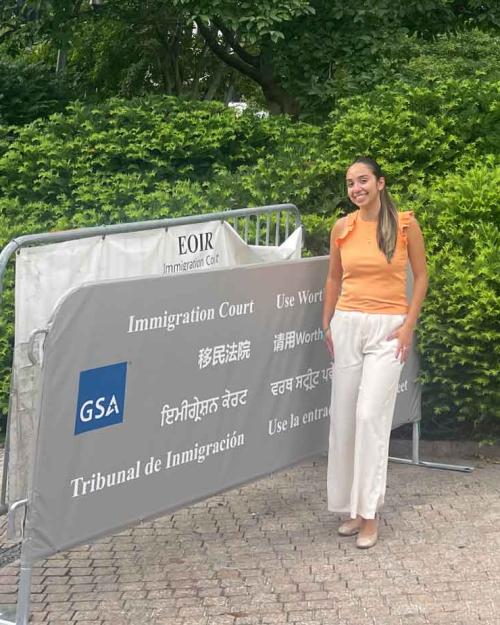 Riano spent her days working with attorneys at Safe Passage Project and their clients, young children or teenagers facing deportation. “A lot of them are unaccompanied minors (who) crossed the border, coming from a place of neglect, abuse and poverty or escaping gang violence,” she said. “They have suffered through trauma and violence and are taking the chance to come here for a better life.” A government and American studies major with minors in Latino studies and migration, Riano plans to attend law school and has an interest in immigration law. She has worked with the Cornell Defender Program, a pre-professional program run by Cornell’s Office of Academic Diversity Initiatives for students interested in exploring family and criminal law. She also spent a semester studying in Australia, where she worked with a program helping people seeking asylum there. “I’ve learned to use this sadness in a healthy way – it inspires me and pushes me forward,” she said. Riano said she’s been frustrated to learn it can take many years for child immigrants to receive employment papers and a green card. “I met 15 and 16-year-old girls from Honduras fleeing violence who talked about taking buses and cars and walking the whole way through Mexico and into the U.S.,” she said. Riano said she’s wanted to be a lawyer since middle school, but this summer work has helped her “better understand the kind of law I want to pursue.” Makoviak, who is from Kyiv, Ukraine, said finding a summer internship as an international student is a complex process, requiring approval from several institutions. “I knew I wanted to do something related to film/theatre production, so I wrote around 60 emails to different theatre and film production companies,” said Makoviak, who is studying government and performing and media arts. “SEG allowed me not only to cover my basic needs but make my dream real. When I saw that the Academy is located at Hollywood Boulevard, I got speechless.”  Makoviak worked as a production assistant under director Chris Thornton, on the play “Noises Off.” “Not only do I get to substitute actors at rehearsals (and practice my acting) but I also learn about set and prop design,” she said. “Most importantly, I learn a lot about directing and director-actor dynamics. Listening to Chris working with the actors is like being on a 3-4 hour lecture on directing.” Makoviak said the grant funding also allowed her to volunteer at short film festivals including LA Shorts and HollyShorts, where she met many passionate artists. “This internship convinced me once more that it is crucial to follow your dreams,” she said. Farroha, a biological sciences major with a concentration in computational biology who plans to attend medical school, worked in NIH’s National Heart, Lung, and Blood Institute last summer, so she chose to accept a position within the National Institute of Arthritis and Musculoskeletal and Skin Diseases branch this year. 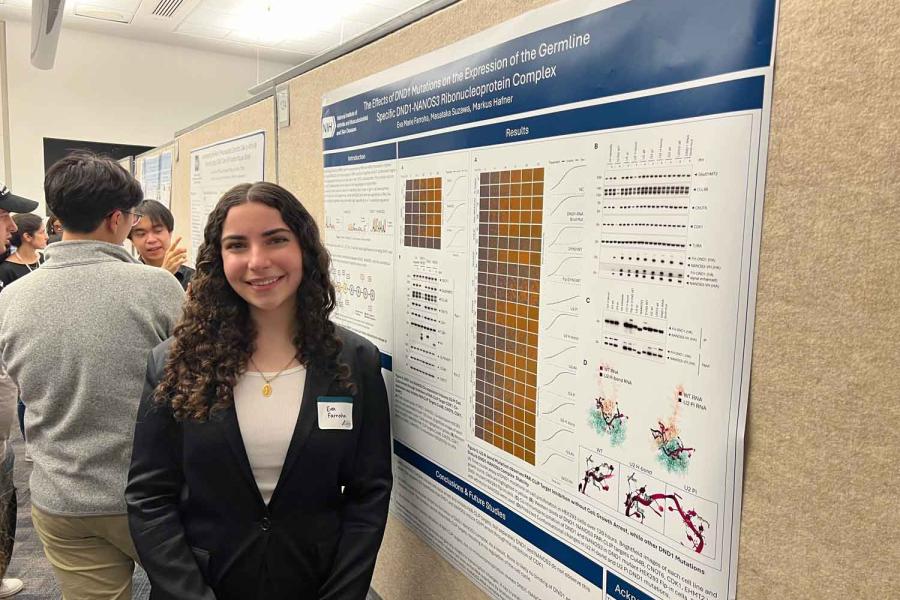 “I saw similarities between my favorite course BIOMG 4400 and the lab's research interests,” she said. “I was hoping to use the skills I already had learned in class while also engaging in new techniques.” The protein complex Farroha studied is responsible for the production of functional sperm and ovaries. When the complex is disrupted, she said, it results in infertility. “My project was to see how mutations in DND1 at its RNA binding regions affect the functionality of the whole complex,” she said. “This involved using predictive AI software to determine intramolecular interactions, constructing 8 mutant cell lines and performing a variety of experiments.” The summer experience heightened her interest in research as she moves toward medical school, Farroha said. “Conducting a research project allowed me to engage in critical thinking and professionalism,” she said. “I also think research is super valuable for the presentation aspect, which directly translates to how important effective communication is in the doctor-patient relationship.” D'Ambrosio, a government major, said her summer work offered the chance to work on a legal team while also learning the intricacies of financial compliance.  “My role encompassed conducting due diligence reviews, managing regulatory responses and preparing detailed case reports,” she said. “I also conducted monitoring projects aimed at fraud prevention and analyzed transactional data to identify and address risk patterns impacting clients.” For her capstone project, she collaborated with other interns, developing and presenting a new strategic initiative to the company’s board of partners. “This experience has not only solidified my commitment to attending law school but has also strengthened my ambition to pursue a career that bridges finance and law, with a particular focus on financial compliance or corporate law,” she said. The SEG funding was vital, she said, as the company is located in Boston, so housing and living expenses were steep. Moyo, a computer science major from Zimbabwe, said he never felt encouraged to pursue a tech career until he got to Cornell, “so volunteering at Emzini weCode was a chance for me to change that narrative for other youths in Zimbabwe so that they would be more informed about computer science when they get into college.” 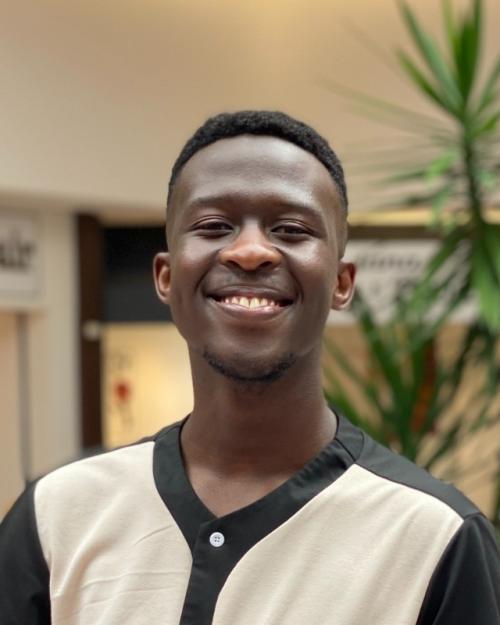 Along with teaching students, Moyo conducted research aimed at enhancing the hands-on learning experience for first-time coders and created content and helped with administrative tasks for the organization. “I found so much joy teaching students how to code,” he said. “I want to be involved in a career where I get to work with young people to help them realize their potential and reach for the power to express themselves through technology.” More News from A&S Sleep resets neurons for new memories the next day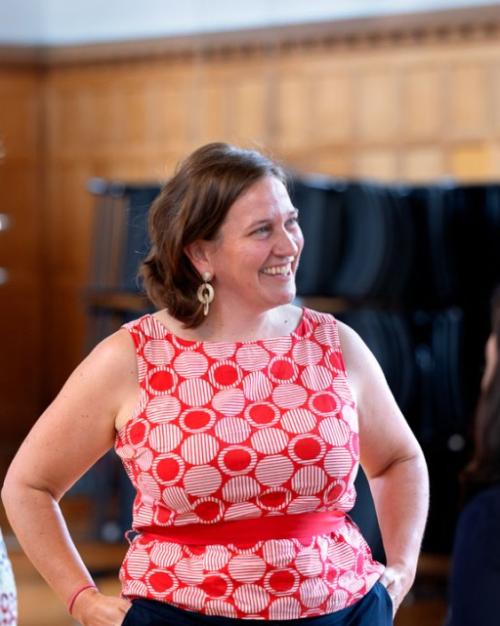 A&S program manager creates inclusive space for staff Academic boot camp tackles mission: imposter syndrome Timely responses – even from a car – drive babies’ learning  NIH Grant Will Support Lymphoma Research- Share to Facebook
- Share to Twitter
- Share to LinkedIn
- Share on Email
 With new NIH funding, Weill Cornell Medicine investigators will explore how alterations to the packaging of DNA that affect gene expression, known as epigenetic changes, influence the trajectory of diffuse large B-cell lymphomas. Credit: Shutterstock Weill Cornell Medicine has received a five-year, $12.4 million grant from the National Cancer Institute, part of the National Institutes of Health, for an extensive program of basic and translational research on the biology of diffuse large B-cell lymphoma (DLBCL), the most common form of lymphoma. The investigator-initiated Program Project grant, led by Dr. Leandro Cerchietti , the Richard A. Stratton Associate Professor in Hematology and Oncology at Weill Cornell Medicine, and Dr. Christopher Flowers , professor and chair of the Department of Lymphoma and Myeloma at The University of Texas MD Anderson Cancer Center , is meant to support a collaborative, multi-faceted effort towards a major biomedical research goal.  Dr. Leandro Cerchietti DLBCL represents a significant challenge for cancer biologists because about 40% of patients either don’t respond well to initial chemotherapy or end up relapsing. Response rates also can vary dramatically among different DLBCL subtypes. Researchers expect that the development of significantly better treatments will require a more comprehensive understanding of the complex processes that trigger and sustain the disease. DLBCL cells are known to originate from antibody-producing B cells residing in lymph node structures called germinal centers. As part of the normal immune response, for example to fight infection, B cells gather in these centers, briefly proliferating and mutating their antibody-coding genes to diversify their ability to bind to antigens. This ultimately allows the antibody response to effectively neutralize its targets. But B cells in this high-mutation state are especially vulnerable to cancerous changes. The collective work of lymphoma scientists has shown in prior studies that lymphoma-driving gene mutations often work by reprogramming B cells so that they linger in germinal centers, eventually accumulating full malignancy. As part of the newly funded research program, the researchers intend to reveal this lymphomagenesis process in unprecedented detail, showing how different combinations of gene mutations and interactions with partner immune cells can combine to turn germinal center B cells into different DLBCL subtypes. They will focus strongly on the role of chromatin—the overall packaging of DNA, which programs gene activity and gives cells their basic identity—as the key integrator and modulator of these interactions in germinal center B and DLBCL cells. The laboratories of Drs. Ari Melnick , Steven Josefowicz , Ethel Cesarman , Giorgio Inghirami , Sanjay Patel , John Leonard and Christopher Mason at Weill Cornell Medicine will collaborate on the various projects funded by the grant. These investigators, as well as Dr. Cerchietti, are members of the Sandra and Edward Meyer Cancer Center at Weill Cornell Medicine. Dr. Michael Green , an associate professor in the Division of Cancer Medicine at MD Anderson, will contribute his laboratory’s expertise to the projects as well. The researchers expect their progress in understanding DLBCL origins to illuminate vulnerabilities in these cancers that can be exploited with new and precise treatments—with emphasis on milder, non-chemotherapy treatments that will be more tolerable, especially for older patients. For example, Dr. Cerchietti and colleagues aim to develop methods for reprogramming lymph node-resident T cells so that they attack DLBCL cells. Dr. Cerchietti noted that he and his colleagues will be able to make use of the unique collections of patient tumor samples and novel preclinical models of lymphoma that have been developed over years of collaboration by the investigators participating in this grant under the scientific umbrella of the Weill Cornell Medicine Lymphoma Program , as well as from the MD Anderson team. “This generous grant will allow us to make real advances in understanding lymphoma biology, but it is built on substantial foundations we’ve laid in recent years with our collaborative basic and preclinical research, as well as clinical trials,” Dr. Cerchietti said. Related News- Cognitive Behavioral Therapy App Improves Anxiety in Young Adults
- Study Finds Potential Link Between DNA Markers and Aging Process
- Large Study Confirms Significant Frequency of Undetected Responsiveness in Severe Brain Injury
Back to News Weill Cornell Medicine Office of External Affairs New York, NY --> Phone: (646) 962-9476  | 

























































IMAGES
COMMENTS
Reminder: Federal agencies do not publish personal financial assistance opportunities on Grants.gov. Federal funding opportunities published on Grants.gov are for organizations and entities supporting the development and management of government-funded programs and projects. For more information about personal financial assistance benefits, please visit Benefits.gov.
NIH offers funding for many types of grants, contracts, and even programs that help repay loans for researchers. Learn about these programs, NIH funding strategies, and more. Access reports, data, and analyses of NIH research activities, including information on NIH expenditures and the results of NIH-supported research. How to Apply.
The U.S. National Science Foundation offers hundreds of funding opportunities — including grants, cooperative agreements and fellowships — that support research and education across science and engineering. Learn how to apply for NSF funding by visiting the links below.
Grants & Funding. The National Institutes of Health is the largest public funder of biomedical research in the world. In fiscal year 2022, NIH invested most of its $45 billion appropriations in research seeking to enhance life, and to reduce illness and disability. NIH-funded research has led to breakthroughs and new treatments helping people ...
R03. NIH Small Grant Program (R03): Provides limited funding for a short period of time to support a variety of types of projects, including pilot or feasibility studies, collection of preliminary data, secondary analysis of existing data, small, self-contained research projects, development of new research technology, etc.
Grants & Contracts Find a Funding Opportunity Types of Funding Opportunities Research Grants. Comparing Popular Research Project Grants—R01, R03, and R21. This page discusses the three most common types of Research Projects (R) ...
Grants.gov - Grants.gov lists all current discretionary funding opportunities from 26 agencies of the United States government, including the National Institutes of Health, the National Science Foundation, the Department of Energy, and many others -- in other words, all the most important public funders of research in the United States.
The Research Portfolio Online Reporting Tools (RePORT) website provides information about research grants including the number of funded new and competing R01s, average award dollars and characteristics of research project grants. Definition of an R01. The Research Project (R01) grant is an award made to support a discrete, specified ...
NIH has received almost $4.9 billion to date to fund important COVID-19 research on diagnostic tests, vaccines, and treatments. More than $940 million came from the Coronavirus Aid, Relief, and Economic Security (CARES) Act in March 2020, with supplemental funding coming from the U.S. Congress. Learn more about funded projects by using our interactive map.
COVID-19 Research Grant Awards. The U.S. Department of Health and Human Services (HHS), through the Agency for Healthcare Research and Quality (AHRQ), announced the approval of 28 research grants designed to explore essential questions about the delivery of healthcare during the COVID-19 pandemic. Research projects will focus on areas such as ...
The Spencer Foundation: The Spencer Foundation provides research funding to outstanding proposals for intellectually rigorous education research. The Fulbright Program: The Fulbright Program offers grants in nearly 140 countries to further areas of education, culture, and science. Friends of the Princeton University Library: The Friends of the ...
Research funding is defined as a grant obtained for conducting scientific research generally through a competitive process. To apply for grants and securing research funding is an essential part of conducting research. In this article, we will discuss why should one apply for research grants, what are the avenues for getting research grants ...
There are several different grant research tools with different strengths and weaknesses and dramatically different costs. To help nonprofits navigate the confusing world of grant research databases, we explored some of the available tools. In the chart below, we compare a few of them to help readers hone in on which one might be the best match ...
Who Can Apply: Awarded to institutions as block grants to provide seed money for newly independent investigators to initiate cancer research projects. The principal investigator of the grant should be a senior faculty member. Funding: 1 to 3 years with an average of $120K a year, renewable. Deadline: April 1*.
Research Grant Award. Awards for Research Grants are up to $25,000 for 1year projects, or up to $35,000 for 2year projects. In accordance with AERA's agreement with the funding agencies, institutions may not charge indirect costs or overhead on these awards.
The "electronic storefront for federal grants," organized by topic. Selecting a topic provides links to funding pages for the 26 federal grantmaking agencies, some of which support individual research projects. It offers users "full service electronic grant administration" with guidelines and grant applications available online.
Go to the Grants Learning Center for an overview of grants. Make sure you are eligible before applying. Find federal grants that align with your work. Sign up with Grants.gov to apply using Workspace. Complete and submit your application using Workspace. Enter your Grants.gov tracking number (s) for submission status.
Our new funding opportunity National Priorities: Occurrence and Implications of De Facto Water Reuse on Drinking Water Supplies Funding Opportunity is now open. EPA funds extramural research through its Science to Achieve Results (STAR) program; the People, Prosperity, and the Planet (P3) Program and the Small Business Innovation Research Program.
Grant Research Tools. When looking up giving histories and grant cycles, websites like the Foundation Center's Foundation Directory Online database or GrantStation are invaluable. They allow you to search very detailed records of foundations by a variety of criteria, including past grants, focus areas, and giving interests.
Public vs. private funding. The two main types of research funding are public and private. "Public grant funding comes from federal or state governments," says Dr. Albert. "Money is typically set aside because there is a specific problem or issue that the government wants rigorous research information on.
Nursing Leadership Research Grant - RFP opens October 11, applications due December 15. American Nurses Foundation and Association for Leadership Science in Nursing are partnering to offer a 2-year, $20,000 research grant from the Joyce J. Fitzpatrick Leadership Research Endowment. This will provide funding for one research study that advances ...
Unsuccessful grant applicants must revise and resubmit their proposals during the next funding cycle. Successful grant applications and the resulting research lead to ideas for further research and new grant proposals. Cultivating an ongoing, positive relationship with funding agencies may lead to additional grants down the road.
Here are some of the benefits: Financial support: Grants provide financial support that can help cover research expenses, such as equipment, supplies, travel, and participant compensation. This support can be especially valuable for independent researchers who may not have access to institutional funding.
In 2022, his administration set a goal of cutting the death rate from cancer by at least 50 percent by 2047, including by increasing access to early cancer screening and funding research on new ...
To respond to these needs, EPA awarded $9 million in research grants to address knowledge gaps and better identify and manage antimicrobial resistance risk. These projects will measure the environmental health impact of AMR in wastewater advance understanding in AMR evolution and spread.
The FRA grant development workshop allows fellows to develop their own grants through large and small group work. Fellows who are ready to begin preparing career development award proposals participate in a fellow-focused grant incubator program led by the DOM Research Development Council team.
They will make use of administrative data about grant spending compiled by the Institute for Research on Innovation and Science (IRIS), a resource that Weinberg helped launch with Sloan funding. They will also use text analysis to study author contribution statements and postings for biomedical job openings in industry.
This year, 119 students from the College of Arts & Sciences were awarded Summer Experience Grants, which help pay for housing, food, transportation and other expenses while they undertake minimally-paid or unpaid summer internships or positions.
Weill Cornell Medicine has received a five-year, $12.4 million grant from the National Cancer Institute, part of the National Institutes of Health, for an extensive program of basic and translational research on the biology of diffuse large B-cell lymphoma (DLBCL), the most common form of lymphoma.
(SACRAMENTO) The California Firearm Violence Research Center has awarded nearly $225,000 in grants to investigators studying gun violence exposure among adolescents, intimate partner violence and sex trafficking.. Researchers from Stanford University, the University of California, Davis and the University of San Diego received funding through the center's 2024 Research Grant Award Program.